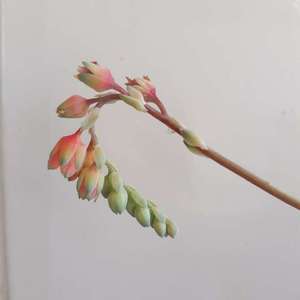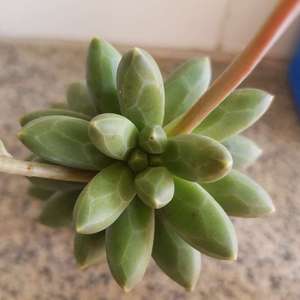文章
莹723
2021年01月20日

Poison Garden, the deadliest garden in the world. This is one garden where you won't want to pick any flowers—unless you have a death wish.
Located at Alnwick Castle in Northumberland, England, this lush, green gated patch is home to over 95 plants, all of which can kill you.

"We obviously have to maintain the garden, so we have to tend to the plants, and when we do that we have to be very careful of the way we operate, so we have to cover some of our skin when we deal with particularly dangerous plants," head gardener Trevor Jones said.
What's the story behind the Poison Garden, which opened in 2005? After visiting a similar one in Padua, Italy built by the Medici family, the Duchess of Northumberland decided that she wanted to start her own, since it was more interesting than your standard herb garden.

Here are some of the plants you would find in the Poison Garden, if you dared to enter:
1.GIANT HOGWEED
This plant can grow up to 14 feet or more, and can cause severe skin irritation, painful blistering, permanent scarring and even blindness.
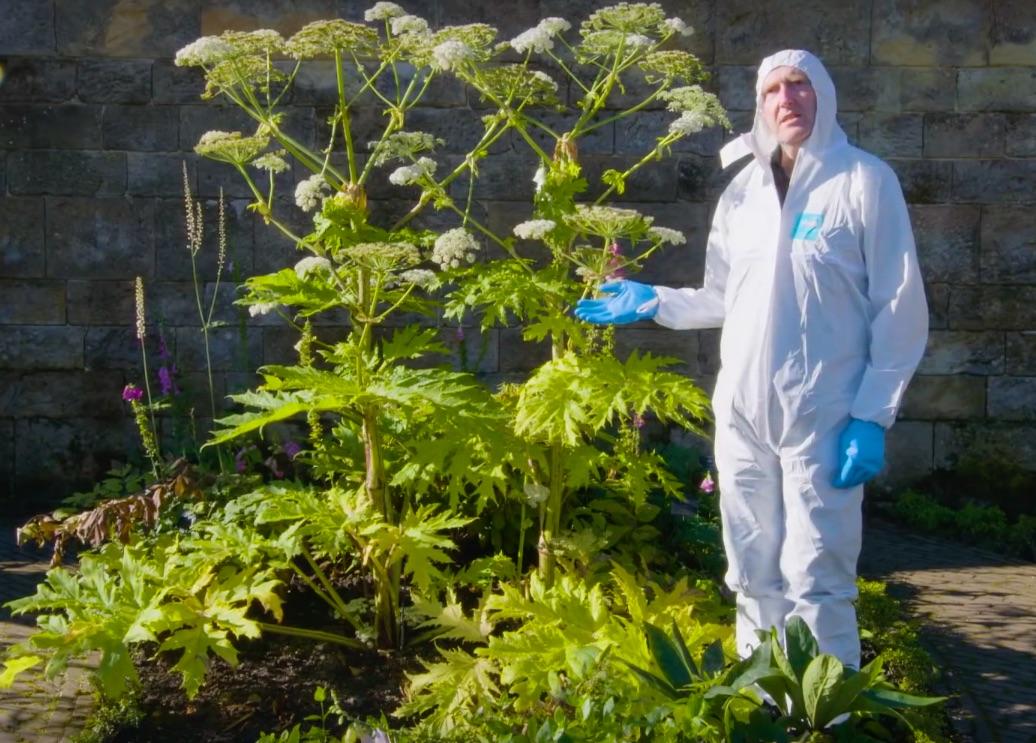
2.ACONTIUM
Beautiful, right? But beware. These poisonous flowers were once used as poisonous arrows by the Aleuts of Alaska's Aleutian Islands for hunting whales. They also have a long history of killing enemies in battle by being used on spears and arrows.

3.ARUM MACULATUM
These flowers have needle-shaped crystals which irritate the skin, mouth, tongue and throat. They have the ability to swell the throat, making it hard to breathe and causing burning pain and an upset stomach. This plant also acts as an insect trap, with its fecal odor (charming!) and warm temperatures.

4.DATURA FLOWERS
These plants are known for causing delirious states and death.
So, if you're planning to visit Alnwick Castle (fun fact: it served as the setting for Hogwarts in the first two Harry Potter films) you can enter the Poison Garden if you dare—just be sure not to touch, taste, or even smell the plants (yes, visitors have fainted from inhaling toxic fumes before). "People think we're being overdramatic when we talk about not smelling the plants, but I've seen the health and safety reports," the Duchess said.

Located at Alnwick Castle in Northumberland, England, this lush, green gated patch is home to over 95 plants, all of which can kill you.

"We obviously have to maintain the garden, so we have to tend to the plants, and when we do that we have to be very careful of the way we operate, so we have to cover some of our skin when we deal with particularly dangerous plants," head gardener Trevor Jones said.
What's the story behind the Poison Garden, which opened in 2005? After visiting a similar one in Padua, Italy built by the Medici family, the Duchess of Northumberland decided that she wanted to start her own, since it was more interesting than your standard herb garden.

Here are some of the plants you would find in the Poison Garden, if you dared to enter:
1.GIANT HOGWEED
This plant can grow up to 14 feet or more, and can cause severe skin irritation, painful blistering, permanent scarring and even blindness.

2.ACONTIUM
Beautiful, right? But beware. These poisonous flowers were once used as poisonous arrows by the Aleuts of Alaska's Aleutian Islands for hunting whales. They also have a long history of killing enemies in battle by being used on spears and arrows.

3.ARUM MACULATUM
These flowers have needle-shaped crystals which irritate the skin, mouth, tongue and throat. They have the ability to swell the throat, making it hard to breathe and causing burning pain and an upset stomach. This plant also acts as an insect trap, with its fecal odor (charming!) and warm temperatures.

4.DATURA FLOWERS
These plants are known for causing delirious states and death.
So, if you're planning to visit Alnwick Castle (fun fact: it served as the setting for Hogwarts in the first two Harry Potter films) you can enter the Poison Garden if you dare—just be sure not to touch, taste, or even smell the plants (yes, visitors have fainted from inhaling toxic fumes before). "People think we're being overdramatic when we talk about not smelling the plants, but I've seen the health and safety reports," the Duchess said.

0
0
文章
莹723
2021年01月18日

Sowing seeds is a economical way to enjoy a supply of veg and flowers for many months of the year.
Different seeds need sowing at different times of year, either inside or outside, and some can be sowed successionally over several months to avoid gluts and ensure continuous harvests.

Give your seeds the right amount of heat, light and moisture, and they will germinate successfully. But there are some important rules to remember, including include good hygiene, using fresh seed and compost and good soil preparation.
Here’s our month-by-month guide to sowing seeds.
1.January
January is a good time to order seeds for the year ahead. If your green fingers are itching and you have a polytunnel, greenhouse or a heated propagator, you could start sowing tender crops, such as chillies, that need a long growing season. You could also sow garlic outside. Also sow sweet peas, plus microgreens on a windowsill.
Sow now
Veg: Microgreens, chillies, aubergines and peppers plus tomatoes under cover; garlic outside
Flowers: Sweet peas, under cover
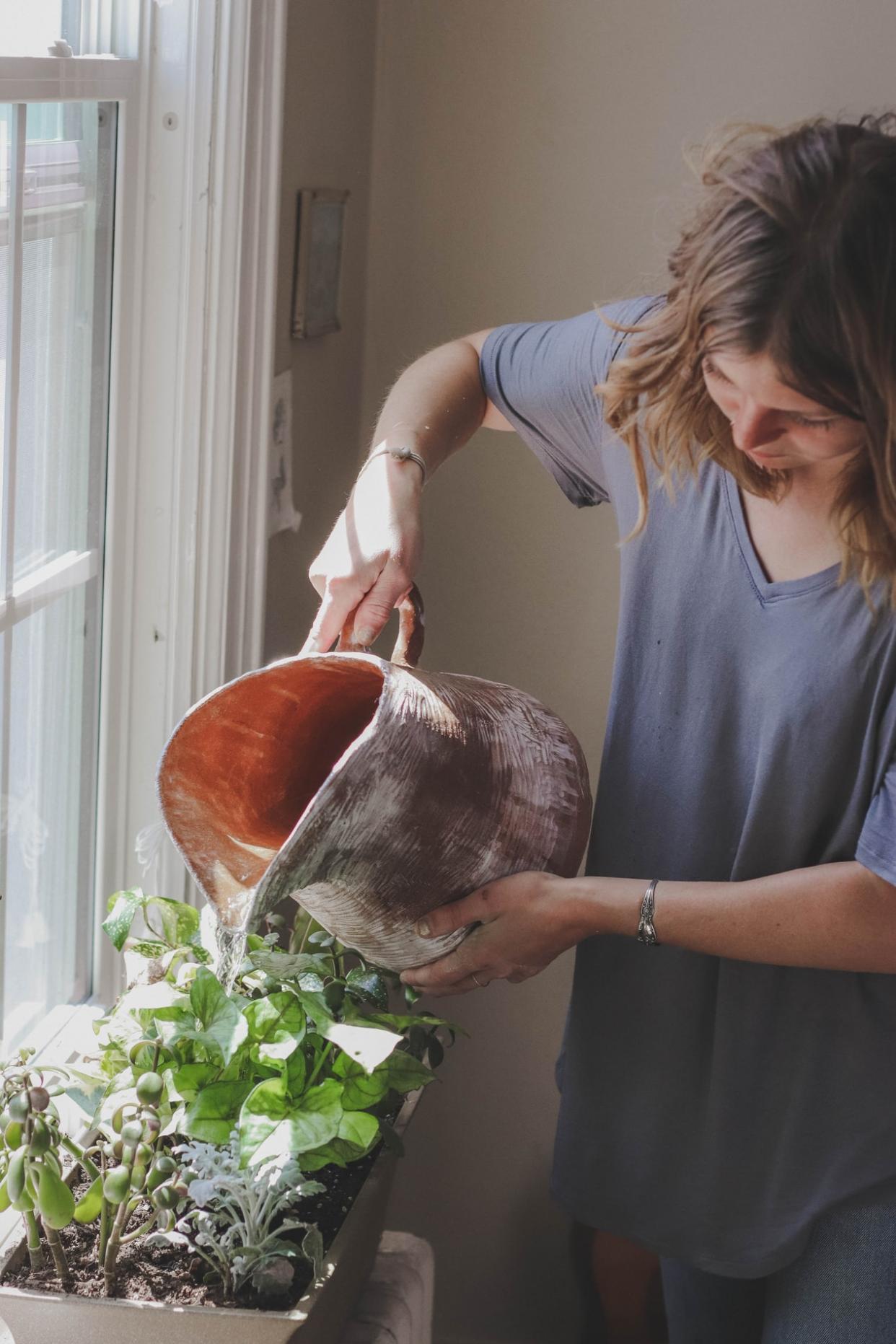
2.February
You can begin or continue to sow tender crops such as tomatoes, chillies, aubergines and peppers, plus some hardy crops and hardy annuals such as sweet peas. You could also get a head start on peas, sown under cover in guttering. If you’re super keen you could have a go at sowing perennials. A propagator is ideal if you have one, though a warm, bright windowsill is fine, too. You can also sow garlic.
Sow now
Veg: Spinach, peas and broad beans (under cover), plus chillies, tomatoes, cucumbers and aubergines, under cover. Plus garlic outside.
Flowers: sweet peas and perennials
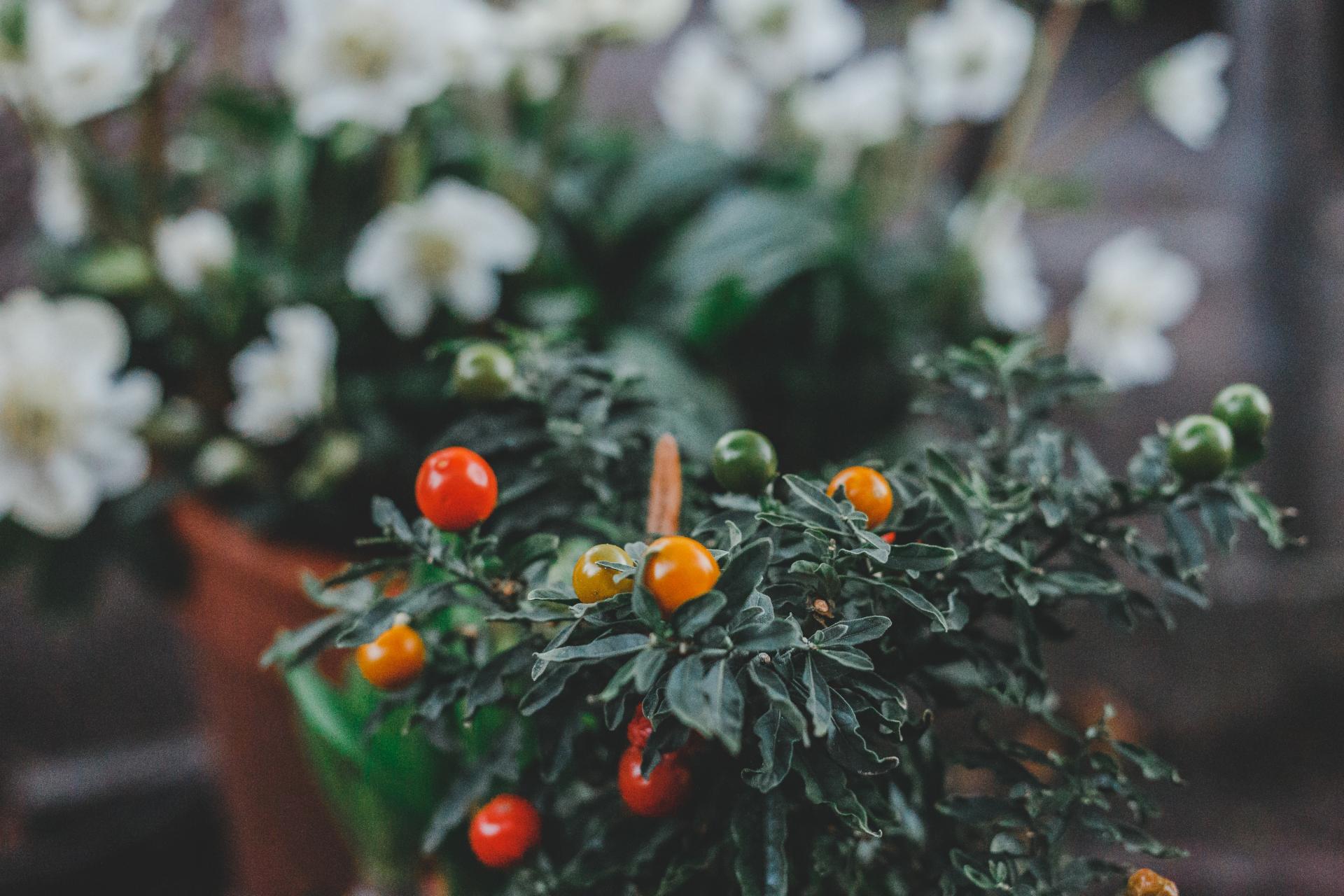
3.March
As the days lengthen and become warmer, you can begin sowing hardy annual flowers and crops outside. If the weather is still cold, warm the soil with polythene before sowing and protect seedlings with cloches or horticultural fleece. You can also start sowing half-hardy annuals and continue to sow tomatoes, chillies and aubergines under glass. Towards the end of the month you can plant out first early seed potatoes.
Sow now
Veg: Aubergines, chillies and tomatoes (under cover), broad beans, peas, beetroot, Swiss chard, radish, kale, spinach, spring onions, first early potatoes (outdoors), plus shallot and onion sets and salad leaves (protect under fleece or a cloche)
Flowers: Cosmos, nicotiana, cleome, nasturtium, cornflowers, marigold (Calendula officinalis), clarkia, cerinthe, morning glory and more

4.April
Seed sowing begins in earnest in April, now that the days are longer and warmer, and many crops can be sown outside. More tender crops such as runner beans or courgettes still need to be sown under glass, either in a greenhouse or on a sunny windowsill. You can also plant out second early potatoes in early to mid-April and maincrop seed potatoes in mid to late-April, onion and shallot sets and garlic and Jerusalem artichokes.
Sow now
Veg: including aubergines, chillies and tomatoes, plus courgettes, squashes, pumpkins, marrows and leeks under cover. Beetroot, carrot, celeriac, peas, radish, lettuce, spinach, Swiss chard, broad beans, spring onions, second early and maincrop seed potatoes.
Flowers: Nicotiana, cosmos, morning glory and many more

5.May
With the risk of frost gone, most seeds can now be directly sown outdoors, including more tender crops such as runner beans and courgettes towards the end of the month. You can also sow half hardy annuals, including sunflowers, plus make a start on sowing biennials for blooms next year.
Sow now
Veg: Beetroot, purple sprouting broccoli, spinach, lettuce, peas, radish, carrots, spring onions outside; sweetcorn, cucumber, runner beans and courgettes (under cover at the beginning of the month, outside toward the end of the month) courgettes, squashes and pumpkins, under cover
Flowers: Cornflower, sunflowers, outdoors; zinnias and more under cover; foxgloves, sweet rocket and wallflowers, outside or under cover

6.June
Keep sowing quick growing crops such as beetroot, radishes and lettuce successionally, every week or so, for crops in a few weeks’ time. You can also sow carrots but be sure to protect sowings from carrot fly, using insect-proof mesh. Continue sowing biennials, and try sowing half-hardy annuals direct outside. You can also sow runner and French beans and courgettes direct outside for later crops.
Sow now
Veg: lettuce and radish every week or so, beetroot, peas, runner and French beans, spring onions, courgettes, lettuce, carrots, purple sprouting broccoli
Flowers: Zinnias, foxgloves, wallflowers, cosmos, sweet rocket and more

7.July
This is your last chance to sow biennials. It’s also time to make a start on sowing winter veg. It’s a good time to sow carrots to avoid carrot fly, as well as continuing with radishes, beetroot and lettuce. You can also sow runner or French beans for a late crop. If you fancy growing potatoes for Christmas, now is the time to plant some.
Sow now
Veg: Runner beans, Swiss chard (for crops the following spring), kale, winter cabbage, spinach, spring onions, potatoes for Christmas, radishes, beetroot, lettuce, radish
Flowers: Foxgloves, wallflowers, sweet rocket

8.August
You can still sow lots of crops in August, for harvests into autumn and beyond, and it’s a key month for sowing winter crops. Discover some winter veg crops to sow in August. Continue to sow fast-growing crops such as radish, between slower-growing crops.
Sow now
Veg: Lettuce (keep out of the glare of direct sun), rocket, spring onion, radish, plus winter salads, including mibuna, mizuna, mustard leaf and lamb’s lettuce.

9.September
Now is the time to start sowing hardy annuals for early summer flowers next year. Some, such as Ammi majus, do better from an autumn sowing. You can sow leafy veg such as spinach, plus winter salads and quick-growing crops such as radish.
Sow now
Veg: Spinach, winter salads, radish
Flowers: Ammi majus and other hardy annuals
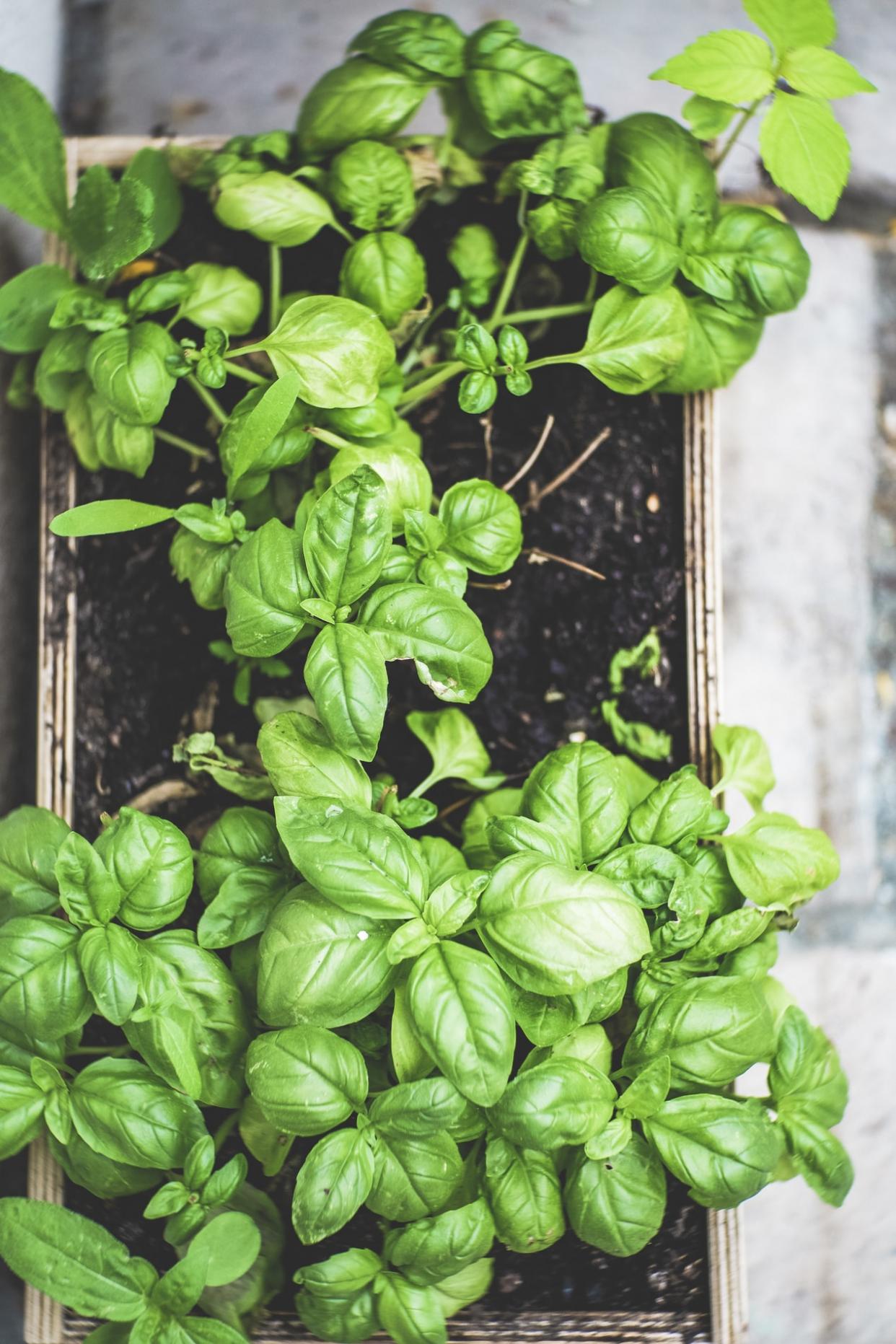
10.October
You can sow peas (protect from mice) and garlic outdoors. It’s also a great time to start sowing sweet peas for early flowers next summer. Still time to sow winter salads such as Japanese and Chinese salad leaves, corn salad, mustard and more.
Sow now
Veg: Winter salads, peas, garlic
Flowers: Sweet peas

11.November
You can sow broad beans now for an early crop next year. Garlic, onions and shallots can also be sown at this time of year. You can also sow sweet peas for early flowers next summer.
Sow now
Veg: Garlic, onions, shallots, broad beans
Flowers: Sweet peas
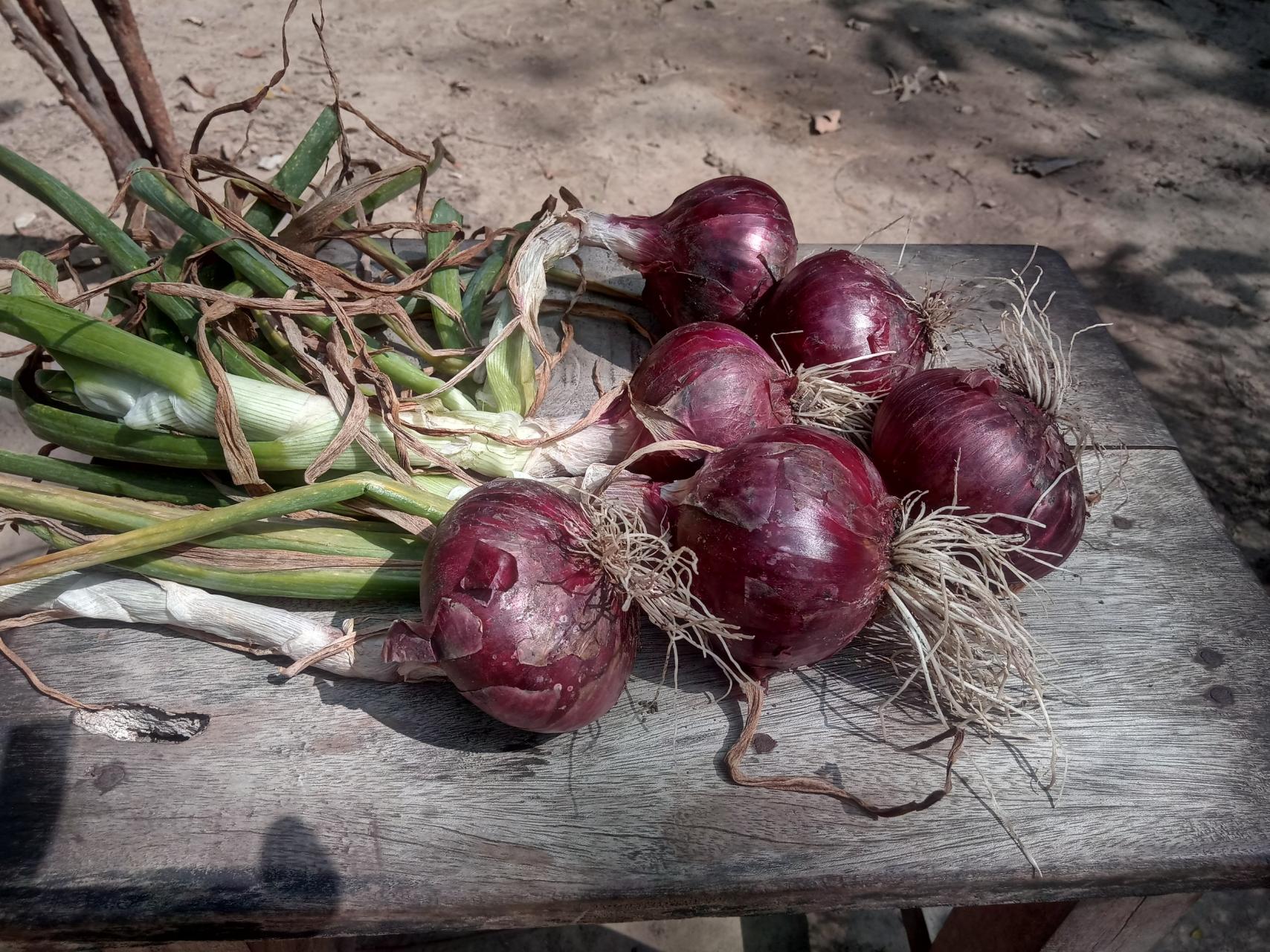
12.December
Seed sowing in unlikely to be on your mind at this time of year, but garlic is traditionally sown on the shortest day of the year. Microgreens can be sown and grown year round for an intense pop of flavour. You can also sow sweet peas.
Sow now
Veg: Garlic, microgreens
Flowers: Sweet peas

Different seeds need sowing at different times of year, either inside or outside, and some can be sowed successionally over several months to avoid gluts and ensure continuous harvests.

Give your seeds the right amount of heat, light and moisture, and they will germinate successfully. But there are some important rules to remember, including include good hygiene, using fresh seed and compost and good soil preparation.
Here’s our month-by-month guide to sowing seeds.
1.January
January is a good time to order seeds for the year ahead. If your green fingers are itching and you have a polytunnel, greenhouse or a heated propagator, you could start sowing tender crops, such as chillies, that need a long growing season. You could also sow garlic outside. Also sow sweet peas, plus microgreens on a windowsill.
Sow now
Veg: Microgreens, chillies, aubergines and peppers plus tomatoes under cover; garlic outside
Flowers: Sweet peas, under cover

2.February
You can begin or continue to sow tender crops such as tomatoes, chillies, aubergines and peppers, plus some hardy crops and hardy annuals such as sweet peas. You could also get a head start on peas, sown under cover in guttering. If you’re super keen you could have a go at sowing perennials. A propagator is ideal if you have one, though a warm, bright windowsill is fine, too. You can also sow garlic.
Sow now
Veg: Spinach, peas and broad beans (under cover), plus chillies, tomatoes, cucumbers and aubergines, under cover. Plus garlic outside.
Flowers: sweet peas and perennials

3.March
As the days lengthen and become warmer, you can begin sowing hardy annual flowers and crops outside. If the weather is still cold, warm the soil with polythene before sowing and protect seedlings with cloches or horticultural fleece. You can also start sowing half-hardy annuals and continue to sow tomatoes, chillies and aubergines under glass. Towards the end of the month you can plant out first early seed potatoes.
Sow now
Veg: Aubergines, chillies and tomatoes (under cover), broad beans, peas, beetroot, Swiss chard, radish, kale, spinach, spring onions, first early potatoes (outdoors), plus shallot and onion sets and salad leaves (protect under fleece or a cloche)
Flowers: Cosmos, nicotiana, cleome, nasturtium, cornflowers, marigold (Calendula officinalis), clarkia, cerinthe, morning glory and more

4.April
Seed sowing begins in earnest in April, now that the days are longer and warmer, and many crops can be sown outside. More tender crops such as runner beans or courgettes still need to be sown under glass, either in a greenhouse or on a sunny windowsill. You can also plant out second early potatoes in early to mid-April and maincrop seed potatoes in mid to late-April, onion and shallot sets and garlic and Jerusalem artichokes.
Sow now
Veg: including aubergines, chillies and tomatoes, plus courgettes, squashes, pumpkins, marrows and leeks under cover. Beetroot, carrot, celeriac, peas, radish, lettuce, spinach, Swiss chard, broad beans, spring onions, second early and maincrop seed potatoes.
Flowers: Nicotiana, cosmos, morning glory and many more

5.May
With the risk of frost gone, most seeds can now be directly sown outdoors, including more tender crops such as runner beans and courgettes towards the end of the month. You can also sow half hardy annuals, including sunflowers, plus make a start on sowing biennials for blooms next year.
Sow now
Veg: Beetroot, purple sprouting broccoli, spinach, lettuce, peas, radish, carrots, spring onions outside; sweetcorn, cucumber, runner beans and courgettes (under cover at the beginning of the month, outside toward the end of the month) courgettes, squashes and pumpkins, under cover
Flowers: Cornflower, sunflowers, outdoors; zinnias and more under cover; foxgloves, sweet rocket and wallflowers, outside or under cover

6.June
Keep sowing quick growing crops such as beetroot, radishes and lettuce successionally, every week or so, for crops in a few weeks’ time. You can also sow carrots but be sure to protect sowings from carrot fly, using insect-proof mesh. Continue sowing biennials, and try sowing half-hardy annuals direct outside. You can also sow runner and French beans and courgettes direct outside for later crops.
Sow now
Veg: lettuce and radish every week or so, beetroot, peas, runner and French beans, spring onions, courgettes, lettuce, carrots, purple sprouting broccoli
Flowers: Zinnias, foxgloves, wallflowers, cosmos, sweet rocket and more

7.July
This is your last chance to sow biennials. It’s also time to make a start on sowing winter veg. It’s a good time to sow carrots to avoid carrot fly, as well as continuing with radishes, beetroot and lettuce. You can also sow runner or French beans for a late crop. If you fancy growing potatoes for Christmas, now is the time to plant some.
Sow now
Veg: Runner beans, Swiss chard (for crops the following spring), kale, winter cabbage, spinach, spring onions, potatoes for Christmas, radishes, beetroot, lettuce, radish
Flowers: Foxgloves, wallflowers, sweet rocket

8.August
You can still sow lots of crops in August, for harvests into autumn and beyond, and it’s a key month for sowing winter crops. Discover some winter veg crops to sow in August. Continue to sow fast-growing crops such as radish, between slower-growing crops.
Sow now
Veg: Lettuce (keep out of the glare of direct sun), rocket, spring onion, radish, plus winter salads, including mibuna, mizuna, mustard leaf and lamb’s lettuce.

9.September
Now is the time to start sowing hardy annuals for early summer flowers next year. Some, such as Ammi majus, do better from an autumn sowing. You can sow leafy veg such as spinach, plus winter salads and quick-growing crops such as radish.
Sow now
Veg: Spinach, winter salads, radish
Flowers: Ammi majus and other hardy annuals

10.October
You can sow peas (protect from mice) and garlic outdoors. It’s also a great time to start sowing sweet peas for early flowers next summer. Still time to sow winter salads such as Japanese and Chinese salad leaves, corn salad, mustard and more.
Sow now
Veg: Winter salads, peas, garlic
Flowers: Sweet peas

11.November
You can sow broad beans now for an early crop next year. Garlic, onions and shallots can also be sown at this time of year. You can also sow sweet peas for early flowers next summer.
Sow now
Veg: Garlic, onions, shallots, broad beans
Flowers: Sweet peas

12.December
Seed sowing in unlikely to be on your mind at this time of year, but garlic is traditionally sown on the shortest day of the year. Microgreens can be sown and grown year round for an intense pop of flavour. You can also sow sweet peas.
Sow now
Veg: Garlic, microgreens
Flowers: Sweet peas

0
0
文章
莹723
2021年01月13日

Nasturtium (Tropaeolum majus) is one of the easiest hardy annual flowers to grow, producing masses of vividly coloured blooms through summer and autumn. They’re perfect for growing with children. Nasturtiums come in both bushy and climbing varieties, which makes them splendidly versatile.
Some varieties have attractively marbled or mottled leaves. Nasturtiums not only look spectacular but the flowers, leaves and seeds are edible too. Bees love the colourful nasturtium blooms, and caterpillars of the large and small white butterflies feed on the leaves.
Being annuals, nasturtiums complete their lifecycle in one growing season.

——How to grow nasturtiums
Nasturtiums are ideal for lots of different sunny spots around the garden, including pots. Climbing varieties of nasturtium can be trained up vertical supports and are great to twine through other plants too.
Nasturtiums that are climbers can also be used as trailers – to spread across gravel or cascade down a slope or bank. Free-draining soil is essential for nasturtiums and, unlike many other flowers, they thrive on poor soils.

——Where to grow nasturtiums
Nasturtiums must have sun for at least half the day in order to grow well and do best in sites sheltered from winds. A free-draining soil is essential, and nasturtiums flower best in poor soils (that are low in fertility) as a fertile soil results in lots of leafy growth at the expense of flowers. Hence there’s no need to add fertilizer before sowing.
Nasturtiums do well in gravelly or stony ground or growing on banks. In containers, mix two-thirds peat-free multi-purpose compost with one third fine gravel or grit, to reduce fertility and ensure good drainage.

——How to plant nasturtiums
For best results, sow nasturtium directly where they are to flower, as they’re fast-growing and there’s no need to bother about transplanting. Sow the seed 1.5 cm deep into moist soil to speed germination, so water before planting if conditions are dry.
The first seeds can be sown in mid-spring and you can carry on sowing until mid-summer to ensure flowers right up to the first frosts. Thin the seedlings to 30 cm apart.
However, sowing in pot also works – simply sow one seed per pot and transplant outside when all risk of frost has passed.

——How to care for nasturtiums
Nasturtiums are easy-care and need little maintenance. Plants growing in containers should be watered to keep the compost evenly moist, but not fed. Removing the dead flower heads of nasturtiums will encourage more blooms to be produced for a longer period.
——How to propagate nasturtiums
Nasturtium seeds can be collected when ripe and saved to sow next year. In mild areas, nasturtiums are also likely to self-sow, so you may get seedlings springing up in future years. These can be easily pulled up if not wanted.

——How to harvest and use nasturtiums
Nasturtium leaves, flowers and seeds are all edible. The flowers make a brightly coloured garnish to salads and other uncooked dishes. Nasturtium leaves have a peppery taste and should be picked when young to incorporate in salads. Nasturtium seeds can be used as a substitute for capers and should be picked when mature but still green, for pickling in vinegar.

——Growing nasturtiums: problem solving
Nasturtiums are likely to attract large and small white butterflies (known as cabbage white butterflies) which lay their large greenish eggs on the leaf undersides, which hatch into caterpillars that eat the leaves. This can be useful to deter caterpillars from eating brassica crops but not desirable if you’re growing nasturtiums for flowers. The best method of control is to inspect plants regularly and squash the eggs or young caterpillars, or move them on to plants you don’t mind being eaten.
Nasturtiums are also attractive to aphids, particularly blackfly. By planting nasturtiums alongside bean crops you can lure aphids away from your crop, but you may not appreciate aphids on nasturtiums you’re growing for leaves and flowers. Spray them off with a jet of water or let ladybirds, hoverflies and lacewings remove them for you – all three lay their eggs on aphid colonies and their young quickly eat them up.

——Nasturtium varieties to grow
Choose from mixed flower colours or opt for individually coloured varieties to create coordinated planted schemes.
• Nasturtium ‘Alaska’ – flowers in yellow, orange and red are shown off against cream and green marbled leaves. Bushy, 30 cm high.
• Nasturtium ‘Empress of India’ – crimson-red flowers and dark reddish leaves. 25 cm high.
• Nasturtium ‘Milkmaid’ – Creamy-white flowers on climbing/trailing stems. 180 cm high.
• Nasturtium ‘Paintbox Mixed’ – a mix of brightly coloured flowers that are more upward facing and hence visible than most. 30 cm high.
• Nasturtium ‘Salmon Baby’. Bright salmon pink flowers. 30 cm high.
• Nasturtium ‘Tip Top Velvet’. Dark red blooms that show off well against fresh green foliage. 30 cm high.
• Nasturtium ‘Trailing Mixed’, ‘Tall Mixed’. Masses of orange, yellow and red blooms on long stems that can climb or trail. 180 cm high.
Some varieties have attractively marbled or mottled leaves. Nasturtiums not only look spectacular but the flowers, leaves and seeds are edible too. Bees love the colourful nasturtium blooms, and caterpillars of the large and small white butterflies feed on the leaves.
Being annuals, nasturtiums complete their lifecycle in one growing season.

——How to grow nasturtiums
Nasturtiums are ideal for lots of different sunny spots around the garden, including pots. Climbing varieties of nasturtium can be trained up vertical supports and are great to twine through other plants too.
Nasturtiums that are climbers can also be used as trailers – to spread across gravel or cascade down a slope or bank. Free-draining soil is essential for nasturtiums and, unlike many other flowers, they thrive on poor soils.

——Where to grow nasturtiums
Nasturtiums must have sun for at least half the day in order to grow well and do best in sites sheltered from winds. A free-draining soil is essential, and nasturtiums flower best in poor soils (that are low in fertility) as a fertile soil results in lots of leafy growth at the expense of flowers. Hence there’s no need to add fertilizer before sowing.
Nasturtiums do well in gravelly or stony ground or growing on banks. In containers, mix two-thirds peat-free multi-purpose compost with one third fine gravel or grit, to reduce fertility and ensure good drainage.

——How to plant nasturtiums
For best results, sow nasturtium directly where they are to flower, as they’re fast-growing and there’s no need to bother about transplanting. Sow the seed 1.5 cm deep into moist soil to speed germination, so water before planting if conditions are dry.
The first seeds can be sown in mid-spring and you can carry on sowing until mid-summer to ensure flowers right up to the first frosts. Thin the seedlings to 30 cm apart.
However, sowing in pot also works – simply sow one seed per pot and transplant outside when all risk of frost has passed.

——How to care for nasturtiums
Nasturtiums are easy-care and need little maintenance. Plants growing in containers should be watered to keep the compost evenly moist, but not fed. Removing the dead flower heads of nasturtiums will encourage more blooms to be produced for a longer period.
——How to propagate nasturtiums
Nasturtium seeds can be collected when ripe and saved to sow next year. In mild areas, nasturtiums are also likely to self-sow, so you may get seedlings springing up in future years. These can be easily pulled up if not wanted.

——How to harvest and use nasturtiums
Nasturtium leaves, flowers and seeds are all edible. The flowers make a brightly coloured garnish to salads and other uncooked dishes. Nasturtium leaves have a peppery taste and should be picked when young to incorporate in salads. Nasturtium seeds can be used as a substitute for capers and should be picked when mature but still green, for pickling in vinegar.

——Growing nasturtiums: problem solving
Nasturtiums are likely to attract large and small white butterflies (known as cabbage white butterflies) which lay their large greenish eggs on the leaf undersides, which hatch into caterpillars that eat the leaves. This can be useful to deter caterpillars from eating brassica crops but not desirable if you’re growing nasturtiums for flowers. The best method of control is to inspect plants regularly and squash the eggs or young caterpillars, or move them on to plants you don’t mind being eaten.
Nasturtiums are also attractive to aphids, particularly blackfly. By planting nasturtiums alongside bean crops you can lure aphids away from your crop, but you may not appreciate aphids on nasturtiums you’re growing for leaves and flowers. Spray them off with a jet of water or let ladybirds, hoverflies and lacewings remove them for you – all three lay their eggs on aphid colonies and their young quickly eat them up.

——Nasturtium varieties to grow
Choose from mixed flower colours or opt for individually coloured varieties to create coordinated planted schemes.
• Nasturtium ‘Alaska’ – flowers in yellow, orange and red are shown off against cream and green marbled leaves. Bushy, 30 cm high.
• Nasturtium ‘Empress of India’ – crimson-red flowers and dark reddish leaves. 25 cm high.
• Nasturtium ‘Milkmaid’ – Creamy-white flowers on climbing/trailing stems. 180 cm high.
• Nasturtium ‘Paintbox Mixed’ – a mix of brightly coloured flowers that are more upward facing and hence visible than most. 30 cm high.
• Nasturtium ‘Salmon Baby’. Bright salmon pink flowers. 30 cm high.
• Nasturtium ‘Tip Top Velvet’. Dark red blooms that show off well against fresh green foliage. 30 cm high.
• Nasturtium ‘Trailing Mixed’, ‘Tall Mixed’. Masses of orange, yellow and red blooms on long stems that can climb or trail. 180 cm high.
0
0
文章
莹723
2021年01月03日

Spring blossom is a celebration of winter’s end, and a reminder that summer is just around the corner. Pretty pink and white flowers burst into bloom, providing an early source of pollen and nectar for bees and other pollinators, before falling from their boughs like confetti.
While there are many other spring-flowering shrubs and trees, it’s generally the flowers of fruiting trees belonging to the Rosaceae family including apples, cherries, peaches and pears, which are referred to as blossoms – the flowers which precede their fruit.
Browse our gallery of 10 gorgeous blossoming fruit trees, below.

1.Malus ‘Royalty’
A striking upright ornamental crab apple with magenta flowers. Glossy foliage that turns deep red in autumn. The small red fruits make a fine crab apple jelly, or left alone provide a good food source for birds in winter.

2.Malus domestica ‘Arthur Turner’
One of the best flowering apples, Malus ‘Arthur Turner’ has outstanding pink flowers followed by golden apples that are excellent for cooking and baking. A large, upright tree that is suitable for training as a cordon or espalier.
Three ways to train a fruit tree

3.Prunus ‘Pink Shell’
Prunus ‘Pink Shell’ is a small, spreading ornamental cherry with delicate, cup-shaped pink flowers and pale green leaves that turn orange in autumn. Excellent for early pollinators.

4.Prunus ‘Spire’
Prunus ‘Spire’ is a compact and upright ornamental cherry that produces an impressive show of pink flowers from late March. Its colourful foliage begins bronze, turning yellow and green in summer, followed by red in autumn.

5.Prunus ‘Tai-Haku’
An ancient cultivar, this great white cherry bears white blossoms much larger than most ornamental cherries, up to 6cm wide. Gorgeous bronze foliage turns green in summer. A large, wide tree that’ll need plenty of room.

6.Prunus avium ‘Regina’
An excellent variety of cherry, ‘Regina’ produces clouds of pure-white blossom in spring, followed by large, crimson cherries with superb flavour in summer. Great for a small garden.

7.Prunus incisa ‘Kojo-no-mai’
Reaching up to 2m, this compact ornamental cherry is ideal for a small garden. Showy white flowers blushed pink burst from attractive twisted branches. Excellent red and orange autumn colour.

8.Prunus persica ‘Avalon Pride’
The beautiful peach tree Prunus persica ‘Avalon Pride’ has showy pink flowers early in the spring season, followed by large, juicy peaches in summer. Resistant to peach leaf curl. Choose a sunny, sheltered spot for planting in autumn.

While there are many other spring-flowering shrubs and trees, it’s generally the flowers of fruiting trees belonging to the Rosaceae family including apples, cherries, peaches and pears, which are referred to as blossoms – the flowers which precede their fruit.
Browse our gallery of 10 gorgeous blossoming fruit trees, below.

1.Malus ‘Royalty’
A striking upright ornamental crab apple with magenta flowers. Glossy foliage that turns deep red in autumn. The small red fruits make a fine crab apple jelly, or left alone provide a good food source for birds in winter.

2.Malus domestica ‘Arthur Turner’
One of the best flowering apples, Malus ‘Arthur Turner’ has outstanding pink flowers followed by golden apples that are excellent for cooking and baking. A large, upright tree that is suitable for training as a cordon or espalier.
Three ways to train a fruit tree

3.Prunus ‘Pink Shell’
Prunus ‘Pink Shell’ is a small, spreading ornamental cherry with delicate, cup-shaped pink flowers and pale green leaves that turn orange in autumn. Excellent for early pollinators.

4.Prunus ‘Spire’
Prunus ‘Spire’ is a compact and upright ornamental cherry that produces an impressive show of pink flowers from late March. Its colourful foliage begins bronze, turning yellow and green in summer, followed by red in autumn.

5.Prunus ‘Tai-Haku’
An ancient cultivar, this great white cherry bears white blossoms much larger than most ornamental cherries, up to 6cm wide. Gorgeous bronze foliage turns green in summer. A large, wide tree that’ll need plenty of room.

6.Prunus avium ‘Regina’
An excellent variety of cherry, ‘Regina’ produces clouds of pure-white blossom in spring, followed by large, crimson cherries with superb flavour in summer. Great for a small garden.

7.Prunus incisa ‘Kojo-no-mai’
Reaching up to 2m, this compact ornamental cherry is ideal for a small garden. Showy white flowers blushed pink burst from attractive twisted branches. Excellent red and orange autumn colour.

8.Prunus persica ‘Avalon Pride’
The beautiful peach tree Prunus persica ‘Avalon Pride’ has showy pink flowers early in the spring season, followed by large, juicy peaches in summer. Resistant to peach leaf curl. Choose a sunny, sheltered spot for planting in autumn.

0
0
文章
莹723
2020年12月15日

In the depths of winter and early spring, the flamboyant blooms of amaryllis (Hippeastrum) are welcome. They’re easy to grow, and take between six to eight weeks to flower. Planted in mid-late September, they should produce their large trumpet flowers for Christmas.
The rich red variety ‘Royal Velvet’ is great for decorating your home or to give as a gift:
Like many bulbs, including lilies, all parts of amaryllis are poisonous to cats and dogs, so please grow them in areas they can’t reach.
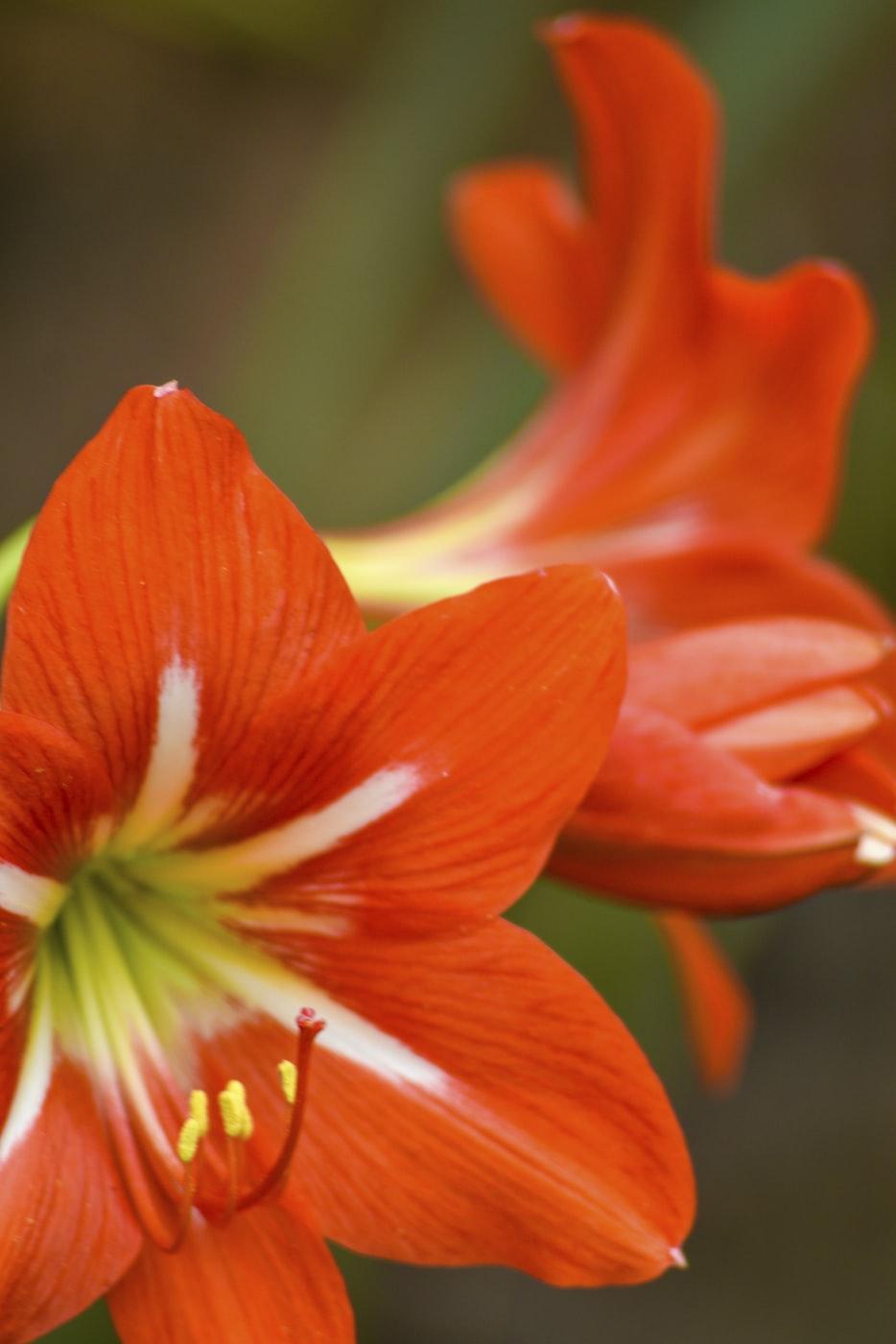
You Will Need
•Amaryllis bulb
•Multi-purpose, peat-free compost
•20cm diameter pot
•Pot, for soaking
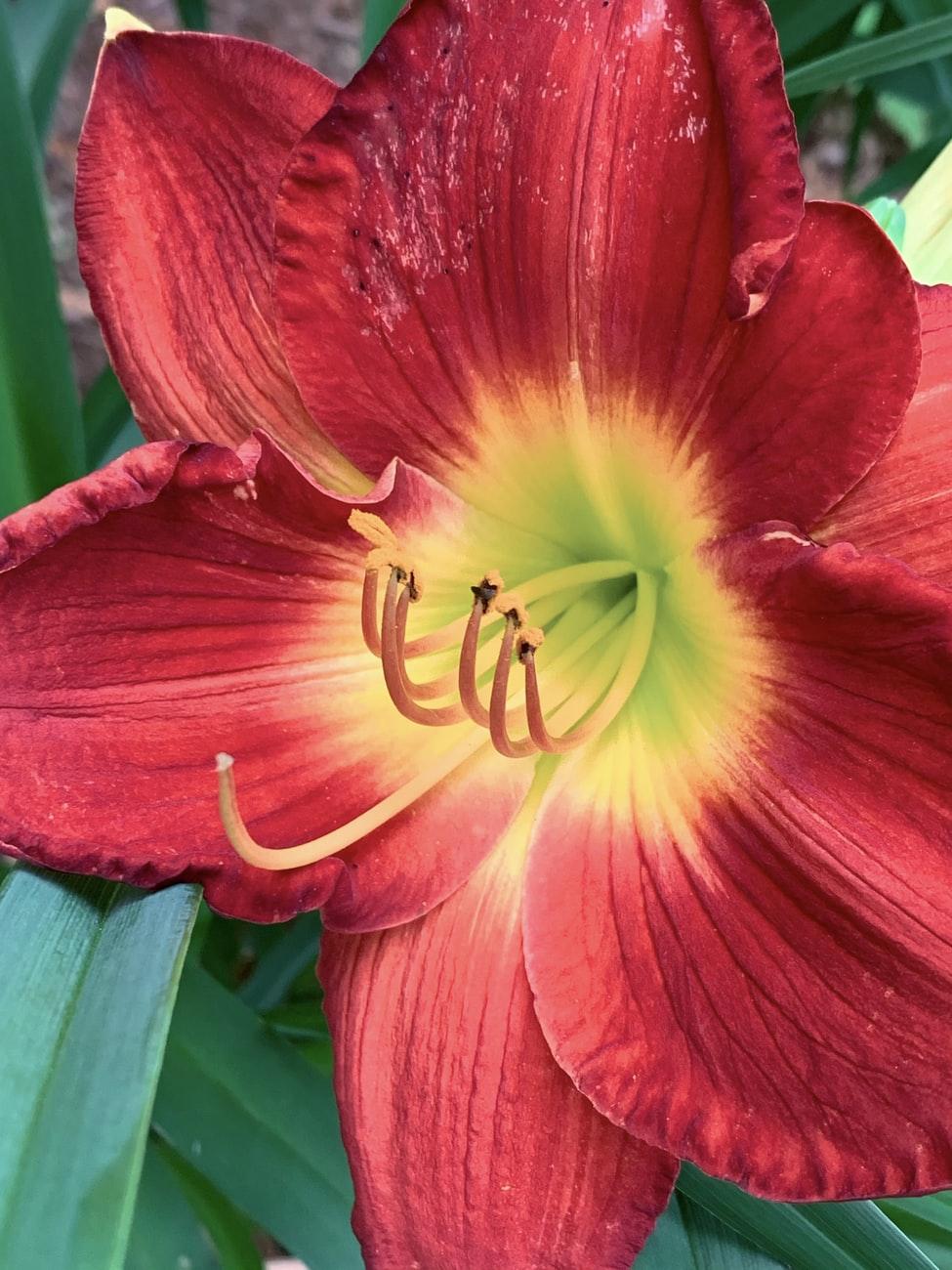
Step 1
Soak the amaryllis bulbs for a few hours to help rehydrate the roots and speed up the growth process.
Step 2
Fill a pot with compost and sit the bulb on top. Don’t use a pot that’s too big: amaryllis do best when pot bound.

Step 3
Top up with compost and water in. Leave in a warm, dark place for a couple of weeks and don’t water further.
Step 4
When a shoot emerges, bring inside to a warm, light spot and water regularly. Expect flowers in six to eight weeks.

The rich red variety ‘Royal Velvet’ is great for decorating your home or to give as a gift:
Like many bulbs, including lilies, all parts of amaryllis are poisonous to cats and dogs, so please grow them in areas they can’t reach.

You Will Need
•Amaryllis bulb
•Multi-purpose, peat-free compost
•20cm diameter pot
•Pot, for soaking

Step 1
Soak the amaryllis bulbs for a few hours to help rehydrate the roots and speed up the growth process.
Step 2
Fill a pot with compost and sit the bulb on top. Don’t use a pot that’s too big: amaryllis do best when pot bound.

Step 3
Top up with compost and water in. Leave in a warm, dark place for a couple of weeks and don’t water further.
Step 4
When a shoot emerges, bring inside to a warm, light spot and water regularly. Expect flowers in six to eight weeks.

0
0
文章
莹723
2020年11月23日

1——DIY Pumpkin Vase Centerpiece
Subtlety is key when it comes to Thanksgiving centerpieces. You've already got so much on the table—why crowd it further? Here, a stunning, quiet arrangement of faux flowers and branches is more than enough to make a serious statement.

2——White Centerpiece
Fall decor isn't all about oranges, yellows, and reds. Dried hydrangeas and white, antler-like decorations can make for an equally gorgeous monochrome centerpiece. Candles bring warmth, and faux pumpkins add texture.

3——Whitewash Pinecones
These pale pinecones are pretty enough to display on their own, or in this simple arrangement featuring gourds, berries, and succulents.

4——Bold Red Centerpiece
A vibrant arrangement is a guaranteed head-turner at any dinner party, but it'll be especially appreciated on Thanksgiving Day. Dahlias, roses, and ranunculus will fit right in with all the red-hued pies and cranberry sauce on your table.

5——Retro Cooler Vase
If Thanksgiving tends to be a casual shindig in your home, use a vintage jug cooler and foraged branches, leaves, and flowers from your backyard.

6——Natural Reeds Centerpiece
Dried reeds and grasses make for a totally unexpected Thanksgiving centerpiece. Evoking the earthiness of the fall season, their muted tones and subdued color palette is sure to elicit more than a few oohs and aahs from your guests.

7——Seasonal Spices
Mix and match wildflowers and vintage spice cans in autumnal hues according to the length of your table. Display two for small settings, and a series for longer setups.
8——Metallic Maize
Give a plain ol' vase some fall flair with this easy idea. Start by coating roughly 14 cobs of dried corn with metallic gold and copper spray paint. Once dry, hot-glue cobs to the perimeter of a 6-inch round vase. Tie it all together with gold raffia. Fill vase with floral foam and add seasonal flowers as desired. (This sampling includes dahlias, zinnias, and mountain ash berries.)

9——Wheat Cloches
Start by bundling a small handful of wheat and tie with twine. Turn a cloche upside down and place the wheat inside, then top with base and invert. Add leftover snips of wheat to securing with twine.

10——Go Green!
A scattering of green gourds and acorn squash laid down the center of the table and accented with orange and red flowers creates quite a pretty site. Bonus: Hot glue acorns to lengths of brown waxed twine and use to tie up rolled napkins. Apply gold leaf to a portion of a preserved maple leaf and use a gold paint pen to mark with guest's initials.

11——Pumpkin Vase
Remove the top quarter of a small pumpkin. Scoop out the seeds and pulp and fill with floral foam and flowers (here, dahlias, scabiosa, strawflowers, zinnias, forget-me-nots, and nigella). Surround your centerpiece with acorns, squash, and other seasonal elements.

12——Foliage-Inspired Florals
Bring some autumnal beauty indoors with this arrangement inspired by the yellow, orange, red, and purple leaves on the trees. A vintage trophy makes the perfect vessel for a big bunch of blooms.

13——Use a Vintage Vessel
A vintage blue-and-white transferware tureen stuffed full of white and yellow flowers, with hints of greenery, looks great as a Thanksgiving table centerpiece. Bonus: Decoupage a white pumpkin with blue and white toile wallpaper.

14——Frilly Lace Pumpkins
Hot glue lace and sewing trim on orange pumpkins and sprinkle them down the center of the table. Orange flower and bittersweet add a soft touch. Bonus: Form napkins into a bow shape and slip a gold napkin ring over the center.

15——Thanksgiving Table Centerpiece
This floral pumpkin centerpiece may look ornate, but it's actually incredibly easy to make. The crafter in question simply carved a gourd and filled it with a bouquet she got from the grocery store!

Subtlety is key when it comes to Thanksgiving centerpieces. You've already got so much on the table—why crowd it further? Here, a stunning, quiet arrangement of faux flowers and branches is more than enough to make a serious statement.

2——White Centerpiece
Fall decor isn't all about oranges, yellows, and reds. Dried hydrangeas and white, antler-like decorations can make for an equally gorgeous monochrome centerpiece. Candles bring warmth, and faux pumpkins add texture.

3——Whitewash Pinecones
These pale pinecones are pretty enough to display on their own, or in this simple arrangement featuring gourds, berries, and succulents.

4——Bold Red Centerpiece
A vibrant arrangement is a guaranteed head-turner at any dinner party, but it'll be especially appreciated on Thanksgiving Day. Dahlias, roses, and ranunculus will fit right in with all the red-hued pies and cranberry sauce on your table.

5——Retro Cooler Vase
If Thanksgiving tends to be a casual shindig in your home, use a vintage jug cooler and foraged branches, leaves, and flowers from your backyard.

6——Natural Reeds Centerpiece
Dried reeds and grasses make for a totally unexpected Thanksgiving centerpiece. Evoking the earthiness of the fall season, their muted tones and subdued color palette is sure to elicit more than a few oohs and aahs from your guests.

7——Seasonal Spices
Mix and match wildflowers and vintage spice cans in autumnal hues according to the length of your table. Display two for small settings, and a series for longer setups.
8——Metallic Maize
Give a plain ol' vase some fall flair with this easy idea. Start by coating roughly 14 cobs of dried corn with metallic gold and copper spray paint. Once dry, hot-glue cobs to the perimeter of a 6-inch round vase. Tie it all together with gold raffia. Fill vase with floral foam and add seasonal flowers as desired. (This sampling includes dahlias, zinnias, and mountain ash berries.)

9——Wheat Cloches
Start by bundling a small handful of wheat and tie with twine. Turn a cloche upside down and place the wheat inside, then top with base and invert. Add leftover snips of wheat to securing with twine.

10——Go Green!
A scattering of green gourds and acorn squash laid down the center of the table and accented with orange and red flowers creates quite a pretty site. Bonus: Hot glue acorns to lengths of brown waxed twine and use to tie up rolled napkins. Apply gold leaf to a portion of a preserved maple leaf and use a gold paint pen to mark with guest's initials.

11——Pumpkin Vase
Remove the top quarter of a small pumpkin. Scoop out the seeds and pulp and fill with floral foam and flowers (here, dahlias, scabiosa, strawflowers, zinnias, forget-me-nots, and nigella). Surround your centerpiece with acorns, squash, and other seasonal elements.

12——Foliage-Inspired Florals
Bring some autumnal beauty indoors with this arrangement inspired by the yellow, orange, red, and purple leaves on the trees. A vintage trophy makes the perfect vessel for a big bunch of blooms.

13——Use a Vintage Vessel
A vintage blue-and-white transferware tureen stuffed full of white and yellow flowers, with hints of greenery, looks great as a Thanksgiving table centerpiece. Bonus: Decoupage a white pumpkin with blue and white toile wallpaper.

14——Frilly Lace Pumpkins
Hot glue lace and sewing trim on orange pumpkins and sprinkle them down the center of the table. Orange flower and bittersweet add a soft touch. Bonus: Form napkins into a bow shape and slip a gold napkin ring over the center.

15——Thanksgiving Table Centerpiece
This floral pumpkin centerpiece may look ornate, but it's actually incredibly easy to make. The crafter in question simply carved a gourd and filled it with a bouquet she got from the grocery store!

0
0
文章
莹723
2020年10月14日

Winter is coming! But,whether you live in North or South, not everything in your garden will be asleep from December to March. Even in the coldest days, many annual flowers, perennial flowers, and flowering shrubs don’t wait to show off. And in mild climates, some winter flowers—like pansies, violas, and ornamental kale and cabbages—will bloom all season long.
Before setting your heart on any of these beauties, make sure you’ll be able to give a plant what it needs, such as full sun or shade. Pay attention to planting times too. Most winter bloomers, including bulbs, need put in the ground in the fall.
Not sure where to start? Check out our free garden plans right here.
1.English Primrose
While some varieties bloom in spring or summer, English primroses show in winter. Red, pink, purple, yellow, or white flowers with mounds of deep green foliage cover this plant.

2.Algerian Iris
Unlike other iris plants in your garden, this lesser-known variety blooms in winter to early spring! Its delicate silvery-purple blooms have a sweet fragrance.

3.Crocus
Sweet little cup-like flowers pop their heads up in late winter to early spring. These bulbs do tend to attract rodents, so don’t be surprised if they bloom somewhere other than where you planted them. Your rodent friends like to dig them up and replant elsewhere to store as food!

4. Pussy Willow
The little fuzzy flowers on these shrubs aren’t bright and showy like a lot of winter bloomers. But they display their considerable charms when winter snow is still on the ground,as a sign that spring is coming.

5.Pansy
Like their relatives, violas, pansies offer brilliant color in early spring. They’ll survive a light frost and bloom for most of the winter in mild climates.

6.Winter Jasmine
This shrub has pretty, yellow flowers on arching branches in late winter. It doesn’t have a fragrance like other types of jasmine, but it does offer a bright splash of sunshine in winter.

7.Cyclamen
These pretty, delicate-looking perennials in pinks, whites, and fuchsia are often sold as houseplants. But in mild climates, they do well as ground covers. They like to be under deciduous trees so they can soak up winter sun.
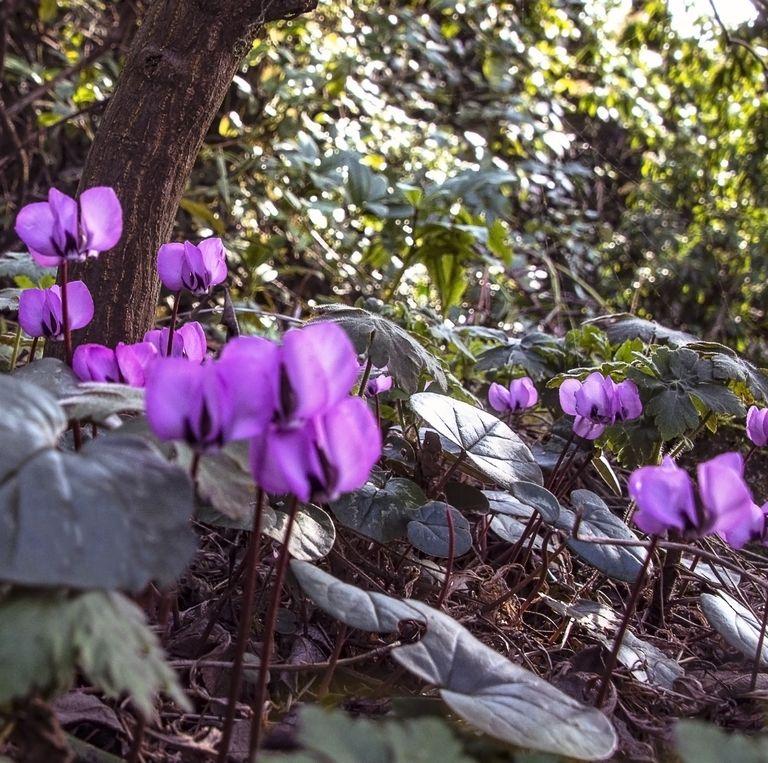
8.Winter Aconite
These happy little yellow blooms will pop up through the snow. Bonus: Deer and rodents usually leave these alone. Plant these bulbs in fall.

9.Viola
The brightly colored, charming violas are a welcome sight on chilly mornings. In mild climates, they’ll last all winter long. They self-seed freely, so you’ll get more baby plants in subsequent years.

10.Winterberry
When cold weather strikes, this plant bursts with bright red berries that add cheery color to the evergreen shrubs. Clip some to bring for holiday cheer, but beware the sharp leaves!

11.Snowdrop
Adorable, drooping white and green flowers appear in late winter, often while there’s still snow. Plant a bunch of them, and get these bulbs in the ground in fall for winter blooms.

12.Daffodil
Daffodils are usually seen as one of the first signs of spring, they will begin growing as early as February. Don't worry about snow or freezing temperatures harming the foliage, they're extremely cold hardy.

Before setting your heart on any of these beauties, make sure you’ll be able to give a plant what it needs, such as full sun or shade. Pay attention to planting times too. Most winter bloomers, including bulbs, need put in the ground in the fall.
Not sure where to start? Check out our free garden plans right here.
1.English Primrose
While some varieties bloom in spring or summer, English primroses show in winter. Red, pink, purple, yellow, or white flowers with mounds of deep green foliage cover this plant.

2.Algerian Iris
Unlike other iris plants in your garden, this lesser-known variety blooms in winter to early spring! Its delicate silvery-purple blooms have a sweet fragrance.

3.Crocus
Sweet little cup-like flowers pop their heads up in late winter to early spring. These bulbs do tend to attract rodents, so don’t be surprised if they bloom somewhere other than where you planted them. Your rodent friends like to dig them up and replant elsewhere to store as food!

4. Pussy Willow
The little fuzzy flowers on these shrubs aren’t bright and showy like a lot of winter bloomers. But they display their considerable charms when winter snow is still on the ground,as a sign that spring is coming.

5.Pansy
Like their relatives, violas, pansies offer brilliant color in early spring. They’ll survive a light frost and bloom for most of the winter in mild climates.

6.Winter Jasmine
This shrub has pretty, yellow flowers on arching branches in late winter. It doesn’t have a fragrance like other types of jasmine, but it does offer a bright splash of sunshine in winter.

7.Cyclamen
These pretty, delicate-looking perennials in pinks, whites, and fuchsia are often sold as houseplants. But in mild climates, they do well as ground covers. They like to be under deciduous trees so they can soak up winter sun.

8.Winter Aconite
These happy little yellow blooms will pop up through the snow. Bonus: Deer and rodents usually leave these alone. Plant these bulbs in fall.

9.Viola
The brightly colored, charming violas are a welcome sight on chilly mornings. In mild climates, they’ll last all winter long. They self-seed freely, so you’ll get more baby plants in subsequent years.

10.Winterberry
When cold weather strikes, this plant bursts with bright red berries that add cheery color to the evergreen shrubs. Clip some to bring for holiday cheer, but beware the sharp leaves!

11.Snowdrop
Adorable, drooping white and green flowers appear in late winter, often while there’s still snow. Plant a bunch of them, and get these bulbs in the ground in fall for winter blooms.

12.Daffodil
Daffodils are usually seen as one of the first signs of spring, they will begin growing as early as February. Don't worry about snow or freezing temperatures harming the foliage, they're extremely cold hardy.

0
0
文章
莹723
2020年09月27日

Slugs are a particular problem in spring, when plenty of young plants are growing.Tell-tale signs of slug damage include irregularly-shaped holes in leaves, stems, flowers, tubers and bulbs and potatoes, and silvery slime trails.
There are many options for controlling slugs, including going out at night with a torch and bucket to pick slugs off by hand. However, you should keep them under control in spring, combine a few methods.Protect all seedlings, new growth on most herbaceous plants, and all parts of susceptible plants, such as delphiniums and hostas.
Here are six ways to stop slugs for you.
1.Use organic slug pellets
Pellets made from ferric phosphate are approved for use by organic growers and are just as effective as non-organic ones but less harmful to birds and other wildlife. Scatter the pellets on the soil as soon as you can before tender growth appears.

2.Water in biological control
Microscopic nematodes can infect slugs with bacteria and then kill them, it’s an effective biological control by watered into the soil. Apply in the evenings when the soil is warm and moist, from spring onwards.
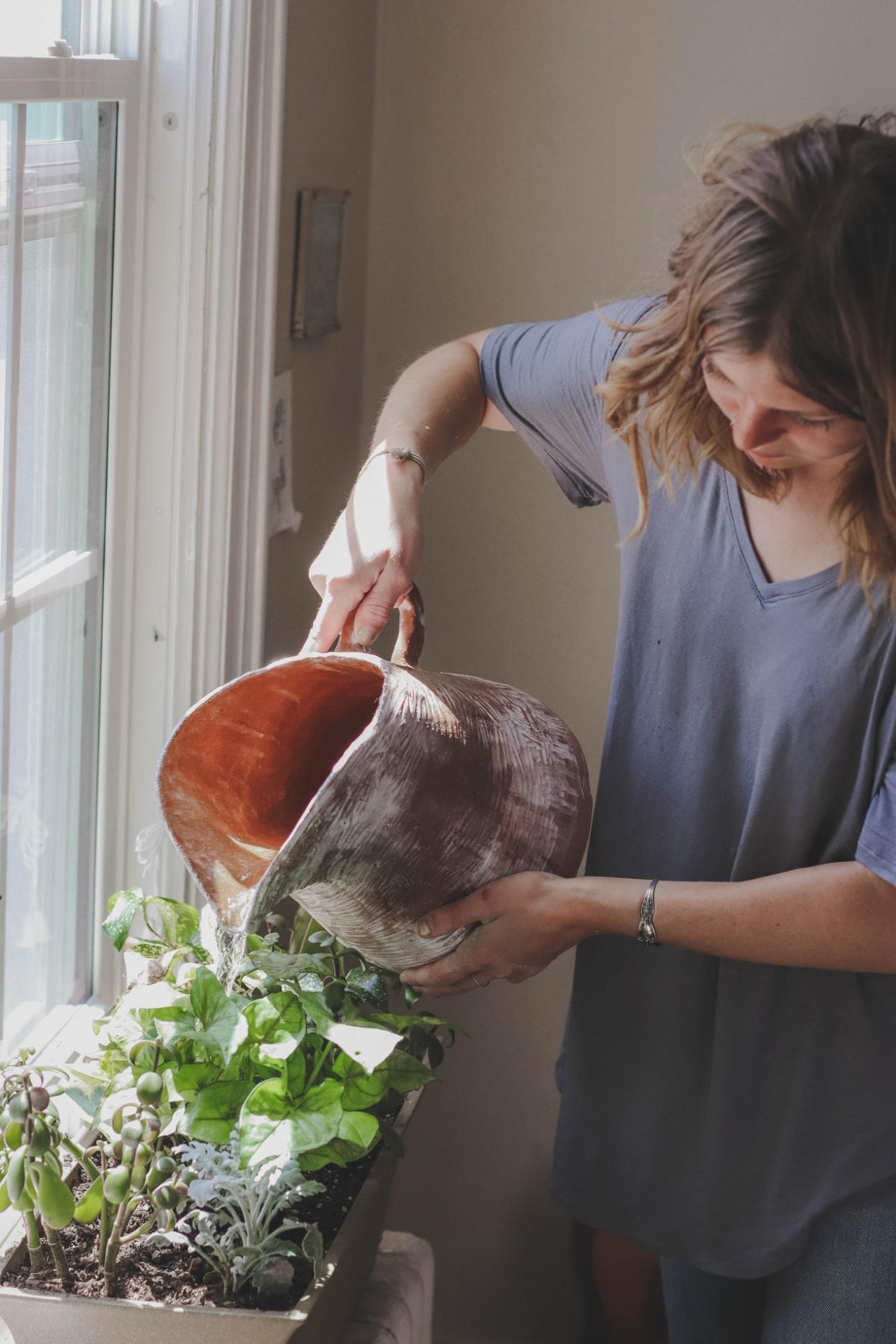
3.Use copper barriers
Copper barriers are effective slug deterrents – if a slug tries to cross one it receives an ‘electric shock’, forcing it back. Put copper rings around vulnerable plants, or stick copper tape around the rim of pots.

4.Use beer traps
They’re attracted to the smell, so make a slug trap with cheap beer. Do this by sinking a beer trap or container into the ground, with the rim just above soil level. Half fill with beer and the cover with a loose lid to stop other creatures falling in. Check and empty regularly.
5.Let them eat bran
Slugs love bran and will gorge on it. They then become bloated and dehydrated, and can’t hide, making them easy pickings for birds. Make sure the bran doesn’t get wet, though.

6.Slug-resistant plants to grow
Hellebores
Astilbes
Hardy geraniums
Eryngiums
Agastaches
Penstemons
Sidalcea
Astrantia
Ferns
Ornamental grasses
Verbena bonariensis

There are many options for controlling slugs, including going out at night with a torch and bucket to pick slugs off by hand. However, you should keep them under control in spring, combine a few methods.Protect all seedlings, new growth on most herbaceous plants, and all parts of susceptible plants, such as delphiniums and hostas.
Here are six ways to stop slugs for you.
1.Use organic slug pellets
Pellets made from ferric phosphate are approved for use by organic growers and are just as effective as non-organic ones but less harmful to birds and other wildlife. Scatter the pellets on the soil as soon as you can before tender growth appears.

2.Water in biological control
Microscopic nematodes can infect slugs with bacteria and then kill them, it’s an effective biological control by watered into the soil. Apply in the evenings when the soil is warm and moist, from spring onwards.

3.Use copper barriers
Copper barriers are effective slug deterrents – if a slug tries to cross one it receives an ‘electric shock’, forcing it back. Put copper rings around vulnerable plants, or stick copper tape around the rim of pots.

4.Use beer traps
They’re attracted to the smell, so make a slug trap with cheap beer. Do this by sinking a beer trap or container into the ground, with the rim just above soil level. Half fill with beer and the cover with a loose lid to stop other creatures falling in. Check and empty regularly.
5.Let them eat bran
Slugs love bran and will gorge on it. They then become bloated and dehydrated, and can’t hide, making them easy pickings for birds. Make sure the bran doesn’t get wet, though.

6.Slug-resistant plants to grow
Hellebores
Astilbes
Hardy geraniums
Eryngiums
Agastaches
Penstemons
Sidalcea
Astrantia
Ferns
Ornamental grasses
Verbena bonariensis

0
0
文章
莹723
2020年09月18日

Summer may go away, but your flowerbeds won’t! Flex your green thumb this autumn with beautiful flowers and plants to bring vibrant colors everyday. You’ll love fall decorations like wreaths, garlands, pumpkins, gourds and fresh flowers.Don’t retire your gardening tools now, because these fall blooms need to make an appearance outside your home and you'll reap the rewards of your planting in cold months.
1-Aster
These daisy-like flowers love lots of sunlight and water. They'll be blooming until almost winter.
Zones: 3-8
2-Chrysanthemum
Chrysanthemums bloom in tons of different shapes, sizes, and colors. They're perfect for container gardening—so fear not if you don't have room for a big garden.
Zones: 5-9

3-Parsley
Grow this popular herb and use it as a garnish for any dish.
Zones: 4-9

4-Winter Pansies
As evidenced by the name, winter pansies can hold their own once temps start to drop—but time your planting accordingly. These florals need to be in the soil with time to spare before the weather hits 45 degrees F or below.
Zones: 6 and above

5-Rosemary
Take this amazing herb off your fall holiday grocery list! You can plant the freshest rosemary it in your own backyard.
Zones: 9-11 as perennials, 1-8 as annuals

6-Cyclamen Hederifolium
A popular hardy perennial, cyclamen hederifolium blooms in the fall.
Zones: 5-9

7-Purple Fountain Grass
This grass is a perfect pairing for other fall flowers like pansies, rudbeckia and flowering kale. Put it in the back of the garden to show off shorter stems.
Zones: 1-8
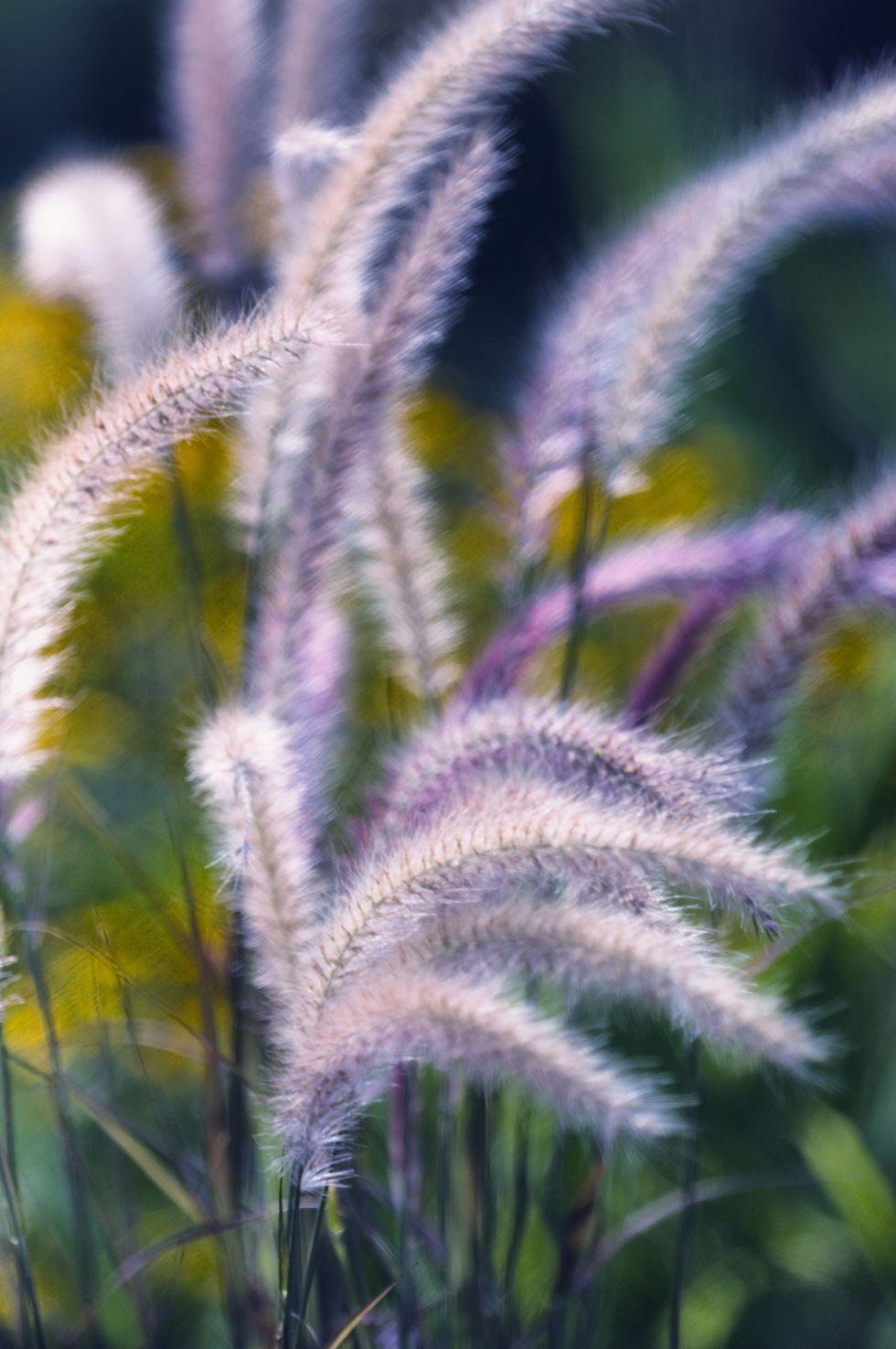
8-Ornamental Kale
Keep this kale well-watered if you want to see vibrant purple and green hues this fall.
Zones: 6-11
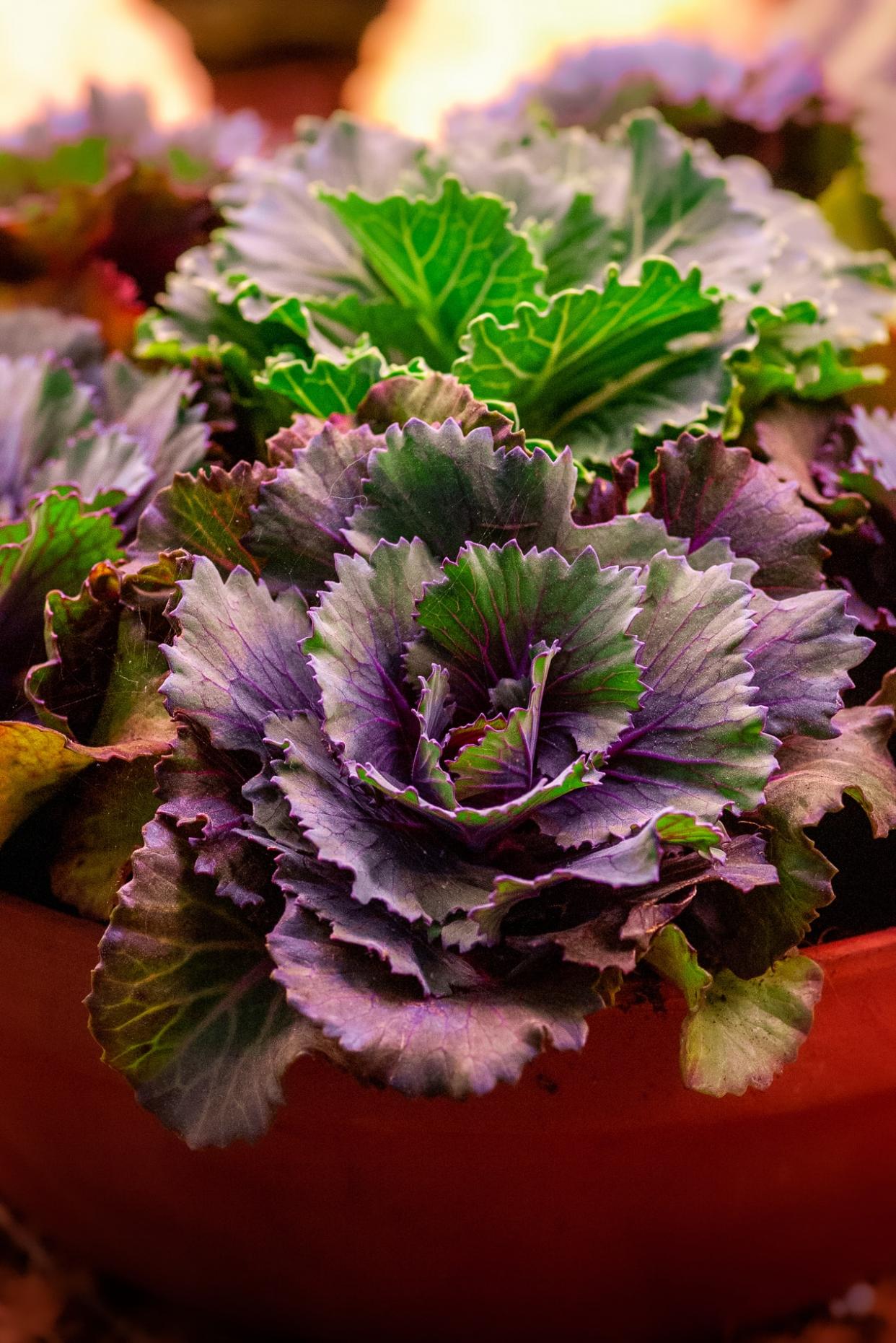
9-Witch Hazel
Growing this shrub is practically maintenance-free, and its bark extract is a well-known healing remedy for skin.
Zones: 5-8

10-Ornamental Peppers
These plants embody all the colors of fall in one punch. Not for human consumption, these fiery little peppers add a bit of flare to your fall garden.
Zones: 9-11

1-Aster
These daisy-like flowers love lots of sunlight and water. They'll be blooming until almost winter.
Zones: 3-8
2-Chrysanthemum
Chrysanthemums bloom in tons of different shapes, sizes, and colors. They're perfect for container gardening—so fear not if you don't have room for a big garden.
Zones: 5-9

3-Parsley
Grow this popular herb and use it as a garnish for any dish.
Zones: 4-9

4-Winter Pansies
As evidenced by the name, winter pansies can hold their own once temps start to drop—but time your planting accordingly. These florals need to be in the soil with time to spare before the weather hits 45 degrees F or below.
Zones: 6 and above

5-Rosemary
Take this amazing herb off your fall holiday grocery list! You can plant the freshest rosemary it in your own backyard.
Zones: 9-11 as perennials, 1-8 as annuals

6-Cyclamen Hederifolium
A popular hardy perennial, cyclamen hederifolium blooms in the fall.
Zones: 5-9

7-Purple Fountain Grass
This grass is a perfect pairing for other fall flowers like pansies, rudbeckia and flowering kale. Put it in the back of the garden to show off shorter stems.
Zones: 1-8

8-Ornamental Kale
Keep this kale well-watered if you want to see vibrant purple and green hues this fall.
Zones: 6-11

9-Witch Hazel
Growing this shrub is practically maintenance-free, and its bark extract is a well-known healing remedy for skin.
Zones: 5-8

10-Ornamental Peppers
These plants embody all the colors of fall in one punch. Not for human consumption, these fiery little peppers add a bit of flare to your fall garden.
Zones: 9-11

1
0
文章
ritau
2020年07月13日

Jasmine is a genus of shrubs and vines in the olive family (Oleaceae). It contains around 200 species native to tropical and warm temperate regions of Eurasia and Oceania. Jasmines are widely cultivated for the characteristic fragrance of their flowers. A number of unrelated plants contain the word "Jasmine" in their common names.
Jasmines are native to tropical and subtropical regions of Eurasia, Australasia and Oceania, although only one of the 200 species is native to Europe.Their center of diversity is in South Asia and Southeast Asia.
A number of jasmine species have become naturalized in Mediterranean Europe. For example, the so-called Spanish jasmine (Jasminum grandiflorum) was originally from West Asia and Indian subcontinent, and is now naturalized in the Iberian peninsula.
Jasminum fluminense (which is sometimes known by the inaccurate name "Brazilian Jasmine") and Jasminum dichotomum (Gold Coast Jasmine) are invasive species in Hawaii and Florida. Jasminum polyanthum, also known as White Jasmine, is an invasive weed in Australia.
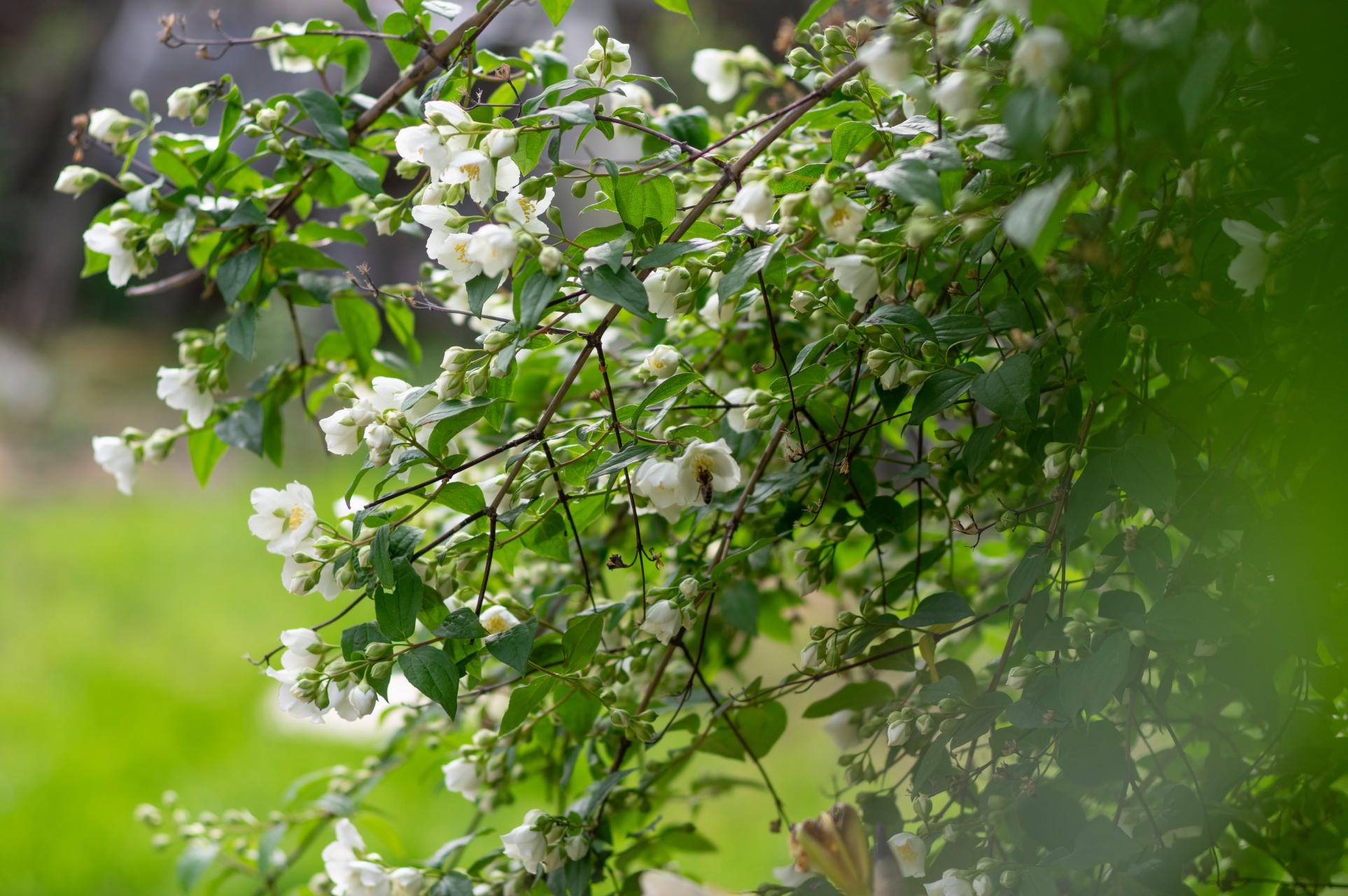
Widely cultivated for its flowers, jasmine is enjoyed in the garden, as a houseplant, and as cut flowers. The flowers are worn by women in their hair in South and South East Asia.
*Jasmine tea
Green tea with jasmine flowers
Jasmine tea is often consumed in China, where it is called jasmine-flower tea (茉莉花茶; pinyin: mò lì huā chá). Jasminum sambac flowers are also used to make jasmine tea, which often has a base of green tea or white tea, but sometimes an Oolong base is used. The flowers are put in machines that control temperature and humidity. It takes about four hours for the tea to absorb the fragrance and flavour of the jasmine blossoms. For the highest grades of jasmine tea, this process may be repeated up to seven times. As the tea absorbs moisture from the fresh Jasmine flowers, it must be refired to prevent spoilage. The used flowers may be removed from the final product, as the flowers contain no more aroma. Giant fans are used to blow away and remove the petals from the denser tea leaves.
In Okinawa, Japan, jasmine tea is known as sanpin cha.

*Jasmonates
Jasmine gave name to the jasmonate plant hormones, as methyl jasmonate isolated from the oil of Jasminum grandiflorum led to the discovery of the molecular structure of jasmonates. Jasmonates occur ubiquitously across the plant kingdom, having key roles in responses to environmental cues, such as heat or cold stress, and participate in the signal transduction pathways of many plants.
*Plantation
Jasmine plantation is usually done using the stem of an existing plant, or one having roots. In rare occasions, the flowers bear dark purple fruits with seeds. The seeds will germinate when sowed and nurtured properly. The flowering shrubs are usually trimmed pre-summer, as fresh branches grow and bear flowers during the summer.
Jasmines are native to tropical and subtropical regions of Eurasia, Australasia and Oceania, although only one of the 200 species is native to Europe.Their center of diversity is in South Asia and Southeast Asia.
A number of jasmine species have become naturalized in Mediterranean Europe. For example, the so-called Spanish jasmine (Jasminum grandiflorum) was originally from West Asia and Indian subcontinent, and is now naturalized in the Iberian peninsula.
Jasminum fluminense (which is sometimes known by the inaccurate name "Brazilian Jasmine") and Jasminum dichotomum (Gold Coast Jasmine) are invasive species in Hawaii and Florida. Jasminum polyanthum, also known as White Jasmine, is an invasive weed in Australia.

Widely cultivated for its flowers, jasmine is enjoyed in the garden, as a houseplant, and as cut flowers. The flowers are worn by women in their hair in South and South East Asia.
*Jasmine tea
Green tea with jasmine flowers
Jasmine tea is often consumed in China, where it is called jasmine-flower tea (茉莉花茶; pinyin: mò lì huā chá). Jasminum sambac flowers are also used to make jasmine tea, which often has a base of green tea or white tea, but sometimes an Oolong base is used. The flowers are put in machines that control temperature and humidity. It takes about four hours for the tea to absorb the fragrance and flavour of the jasmine blossoms. For the highest grades of jasmine tea, this process may be repeated up to seven times. As the tea absorbs moisture from the fresh Jasmine flowers, it must be refired to prevent spoilage. The used flowers may be removed from the final product, as the flowers contain no more aroma. Giant fans are used to blow away and remove the petals from the denser tea leaves.
In Okinawa, Japan, jasmine tea is known as sanpin cha.

*Jasmonates
Jasmine gave name to the jasmonate plant hormones, as methyl jasmonate isolated from the oil of Jasminum grandiflorum led to the discovery of the molecular structure of jasmonates. Jasmonates occur ubiquitously across the plant kingdom, having key roles in responses to environmental cues, such as heat or cold stress, and participate in the signal transduction pathways of many plants.
*Plantation
Jasmine plantation is usually done using the stem of an existing plant, or one having roots. In rare occasions, the flowers bear dark purple fruits with seeds. The seeds will germinate when sowed and nurtured properly. The flowering shrubs are usually trimmed pre-summer, as fresh branches grow and bear flowers during the summer.
0
0
文章
ritau
2020年06月22日

*Removing Dead Leaves, Limbs, and Flowers
1. Use sharp scissors or garden shears. Make sure the scissors or garden shears are very sharp, as dull shears can damage the plants. If you notice any dirt on the shears, soak them in water with a teaspoon of bleach and then wipe them dry. A clean tool will ensure your plants are not exposed to bacteria or pests when you prune them.
-You can find garden shears for pruning online or at your local hardware store.
-If you are worried about scratching your hands while you prune, wear gardening gloves.
2. Prune the plants at the beginning of their growing season. If you have houseplants that do not flower, prune them in late winter. For houseplants with flowers or blooms, wait until they have bloomed before you prune them.
- Do not prune houseplants when unopened buds are present on the stems.
3. Remove dead leaves and limbs at a 45 degree angle. Look for any leaves or limbs on the plant that are brown or discolored. They may also appear limp or dry. Use the shears to cut them off just below the brown or dead area at a 45 degree angle. This will ensure you leave as much of the healthy foliage on the plant as possible.
-Do not cut off any leaves or limbs that still appear green and vibrant.
-If a large section of the leafy area appears dead, you can cut off the entire branch. Leave the main stem intact and remove branches shooting off of the stem at a 45 degree angle.
4. Trim off any dead flowers. If you have houseplants that are flowering, make sure you check them over for any dead flowers and remove them. The flowers may appear brown, discolored, and limp. They may also feel dry to the touch. Cut the dead flowers off with the shears at the base of the flower’s head.
-Removing dead and dying flowers on the plant will encourage the growth of newer, more vibrant blooms.
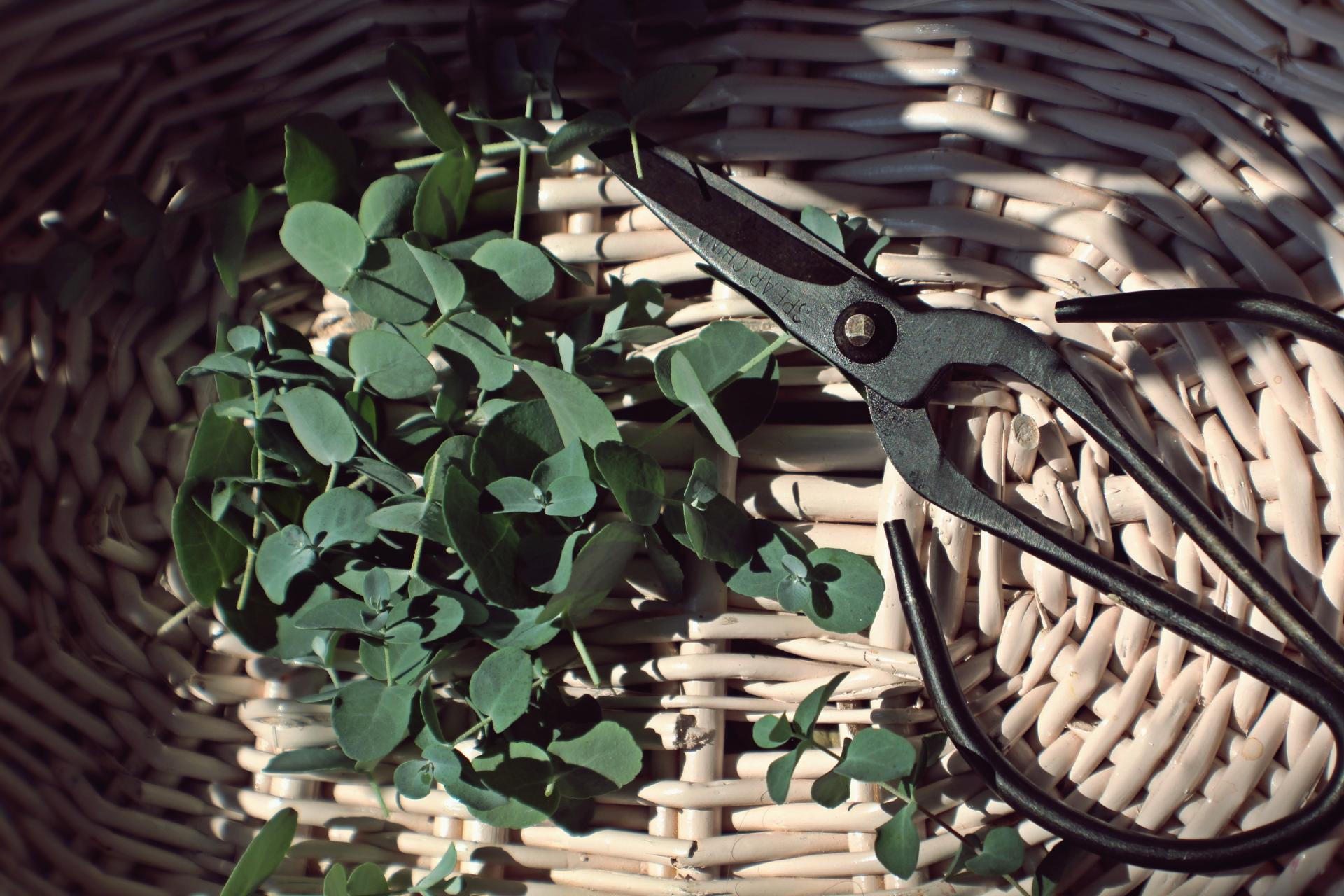
*Cutting Back Overgrown Branches and Stems
1. Prune back half of the longest branches on the plant. Use the shears to cut them back about a third of their length. Trim the branches off at a 45 degree angle.
-If there are any side shoots on the branches further down the base of the plant, you can prune a few of these shoots.
-Do not cut off any nodules on the plants as you prune, which are new buds that have not bloomed or opened yet.
2.Remove leggy stems. Check the plant for any stems that are unusually long. They may appear loose or straggling, falling off different areas of the plant. Pruning leggy stems will help the plant to grow in a fuller, more even pattern. Use the shears to cut the leggy stems back to one third their length, cutting at a 45 degree angle.
3. Pinch off the stems. If you have soft-stemmed houseplants like coleus, heartleaf philodendron, and English ivy, make sure you pinch them regularly. Use your thumb and forefinger to remove the tip of a stem. Pinch above the node, which is the growing point where the leaf is attached to the plant.
- Pinching off the stems can help maintain the bushy shape of the plant and encourage even growth. It also helps to prevent the growth of leggy stems.

4. Remove 10-20% of the plant’s foliage at a time. Do not over prune the plant, as this can make it difficult for it to grow properly. Make selective cuts to the plant, removing only 10-20% of the foliage at a time. Wait a few weeks to one month to prune the plants again.
-Always leave some foliage on the plant when you prune. If you are in doubt, under prune the plant and then reevaluate it a few weeks later.
1. Use sharp scissors or garden shears. Make sure the scissors or garden shears are very sharp, as dull shears can damage the plants. If you notice any dirt on the shears, soak them in water with a teaspoon of bleach and then wipe them dry. A clean tool will ensure your plants are not exposed to bacteria or pests when you prune them.
-You can find garden shears for pruning online or at your local hardware store.
-If you are worried about scratching your hands while you prune, wear gardening gloves.
2. Prune the plants at the beginning of their growing season. If you have houseplants that do not flower, prune them in late winter. For houseplants with flowers or blooms, wait until they have bloomed before you prune them.
- Do not prune houseplants when unopened buds are present on the stems.
3. Remove dead leaves and limbs at a 45 degree angle. Look for any leaves or limbs on the plant that are brown or discolored. They may also appear limp or dry. Use the shears to cut them off just below the brown or dead area at a 45 degree angle. This will ensure you leave as much of the healthy foliage on the plant as possible.
-Do not cut off any leaves or limbs that still appear green and vibrant.
-If a large section of the leafy area appears dead, you can cut off the entire branch. Leave the main stem intact and remove branches shooting off of the stem at a 45 degree angle.
4. Trim off any dead flowers. If you have houseplants that are flowering, make sure you check them over for any dead flowers and remove them. The flowers may appear brown, discolored, and limp. They may also feel dry to the touch. Cut the dead flowers off with the shears at the base of the flower’s head.
-Removing dead and dying flowers on the plant will encourage the growth of newer, more vibrant blooms.

*Cutting Back Overgrown Branches and Stems
1. Prune back half of the longest branches on the plant. Use the shears to cut them back about a third of their length. Trim the branches off at a 45 degree angle.
-If there are any side shoots on the branches further down the base of the plant, you can prune a few of these shoots.
-Do not cut off any nodules on the plants as you prune, which are new buds that have not bloomed or opened yet.
2.Remove leggy stems. Check the plant for any stems that are unusually long. They may appear loose or straggling, falling off different areas of the plant. Pruning leggy stems will help the plant to grow in a fuller, more even pattern. Use the shears to cut the leggy stems back to one third their length, cutting at a 45 degree angle.
3. Pinch off the stems. If you have soft-stemmed houseplants like coleus, heartleaf philodendron, and English ivy, make sure you pinch them regularly. Use your thumb and forefinger to remove the tip of a stem. Pinch above the node, which is the growing point where the leaf is attached to the plant.
- Pinching off the stems can help maintain the bushy shape of the plant and encourage even growth. It also helps to prevent the growth of leggy stems.

4. Remove 10-20% of the plant’s foliage at a time. Do not over prune the plant, as this can make it difficult for it to grow properly. Make selective cuts to the plant, removing only 10-20% of the foliage at a time. Wait a few weeks to one month to prune the plants again.
-Always leave some foliage on the plant when you prune. If you are in doubt, under prune the plant and then reevaluate it a few weeks later.
0
0
文章
ritau
2020年06月02日

A plum is a fruit of the subgenus Prunus of the genus Prunus. The subgenus is distinguished from other subgenera (peaches, cherries, bird cherries, etc.) in the shoots having terminal bud and solitary side buds (not clustered), the flowers in groups of one to five together on short stems, and the fruit having a groove running down one side and a smooth stone (or pit).
Mature plum fruit may have a dusty-white waxy coating that gives them a glaucous appearance. This is an epicuticular wax coating and is known as "wax bloom". Dried plum fruits are called "dried plums" or prunes, although, in many countries (Li hing mui for instance), prunes are a distinct type of dried plum having a wrinkled appearance.
Plums may have been one of the first fruits domesticated by humans. Three of the most abundant cultivars are not found in the wild, only around human settlements: Prunus domestica has been traced to East European and Caucasian mountains, while Prunus salicina and Prunus simonii originated in Asia. Plum remains have been found in Neolithic age archaeological sites along with olives, grapes and figs. According to Ken Albala, plums originated in Iran.

Plums are a diverse group of species. The commercially important plum trees are medium-sized, usually pruned to 5–6 metres height. The tree is of medium hardiness.Without pruning, the trees can reach 12 metres in height and spread across 10 metres. They blossom in different months in different parts of the world; for example, in about January in Taiwan and early April in the United Kingdom.
Fruits are usually of medium size, between 2 and 7 centimetres in diameter, globose to oval. The flesh is firm and juicy. The fruit's peel is smooth, with a natural waxy surface that adheres to the flesh. The plum is a drupe, meaning its fleshy fruit surrounds a single hard seed.
Plum cultivars include:
*Damson (purple or black skin, green flesh, clingstone, astringent)
*Greengage (firm, green flesh and skin even when ripe)
*Mirabelle (dark yellow, predominantly grown in northeast France)
*Satsuma plum (firm red flesh with a red skin)
*Victoria (yellow flesh with a red or mottled skin)
*Yellowgage or golden plum (similar to greengage, but yellow)
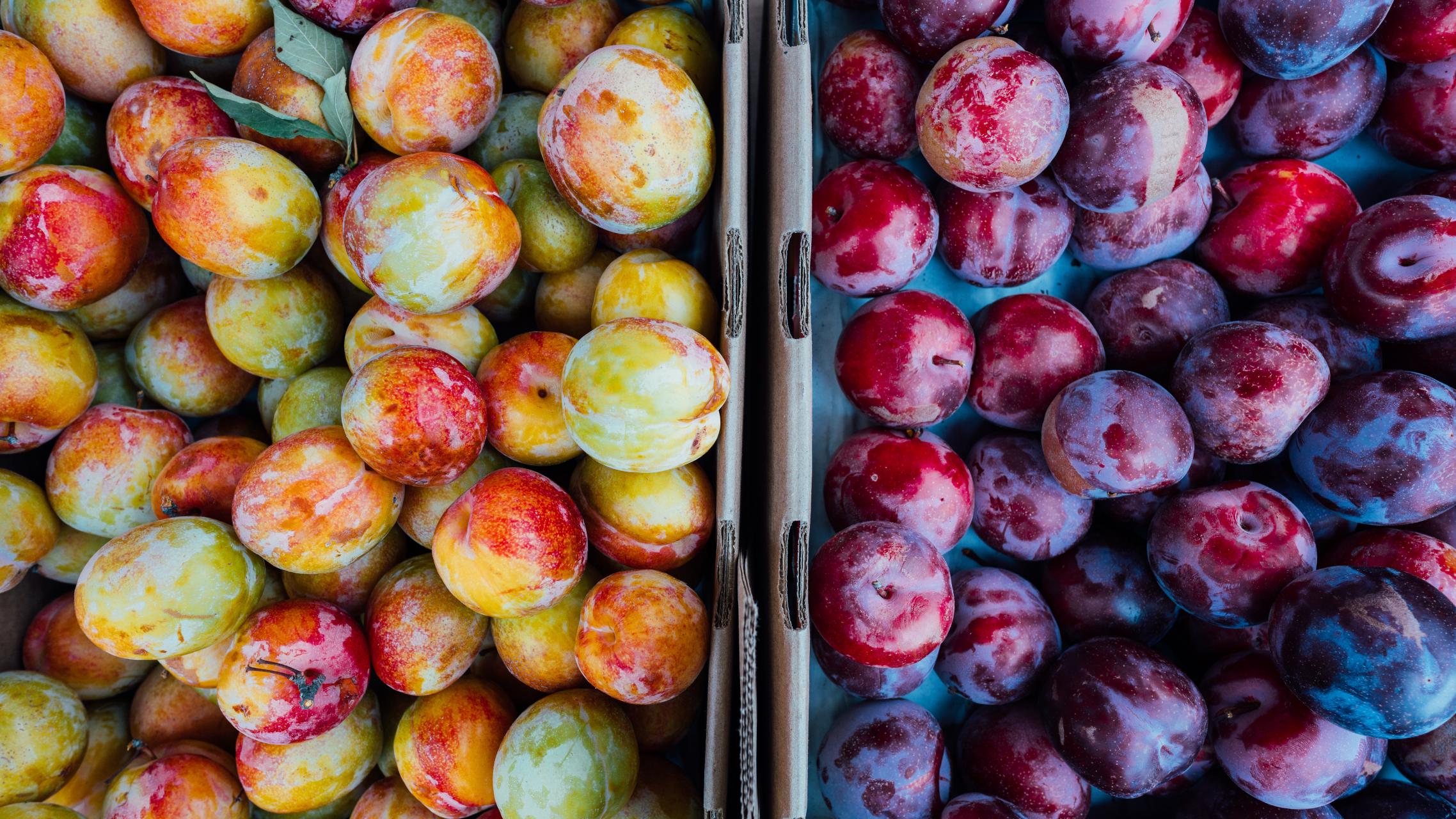
Raw plums are 87% water, 11% carbohydrates, 1% protein, and less than 1% fat. In a 100 gram amount, raw plums supply 46 calories and are a moderate source only of vitamin C (12% Daily Value), with no other nutrients in significant content.
Mature plum fruit may have a dusty-white waxy coating that gives them a glaucous appearance. This is an epicuticular wax coating and is known as "wax bloom". Dried plum fruits are called "dried plums" or prunes, although, in many countries (Li hing mui for instance), prunes are a distinct type of dried plum having a wrinkled appearance.
Plums may have been one of the first fruits domesticated by humans. Three of the most abundant cultivars are not found in the wild, only around human settlements: Prunus domestica has been traced to East European and Caucasian mountains, while Prunus salicina and Prunus simonii originated in Asia. Plum remains have been found in Neolithic age archaeological sites along with olives, grapes and figs. According to Ken Albala, plums originated in Iran.

Plums are a diverse group of species. The commercially important plum trees are medium-sized, usually pruned to 5–6 metres height. The tree is of medium hardiness.Without pruning, the trees can reach 12 metres in height and spread across 10 metres. They blossom in different months in different parts of the world; for example, in about January in Taiwan and early April in the United Kingdom.
Fruits are usually of medium size, between 2 and 7 centimetres in diameter, globose to oval. The flesh is firm and juicy. The fruit's peel is smooth, with a natural waxy surface that adheres to the flesh. The plum is a drupe, meaning its fleshy fruit surrounds a single hard seed.
Plum cultivars include:
*Damson (purple or black skin, green flesh, clingstone, astringent)
*Greengage (firm, green flesh and skin even when ripe)
*Mirabelle (dark yellow, predominantly grown in northeast France)
*Satsuma plum (firm red flesh with a red skin)
*Victoria (yellow flesh with a red or mottled skin)
*Yellowgage or golden plum (similar to greengage, but yellow)

Raw plums are 87% water, 11% carbohydrates, 1% protein, and less than 1% fat. In a 100 gram amount, raw plums supply 46 calories and are a moderate source only of vitamin C (12% Daily Value), with no other nutrients in significant content.
0
0
文章
ritau
2020年05月25日

The significance assigned to specific flowers in Western culture varied — nearly every flower had multiple associations, listed in the hundreds of floral dictionaries — but a consensus of meaning for common blooms has emerged. Often, definitions derive from the appearance or behavior of the plant itself. For example, the mimosa, or sensitive plant, represents chastity. This is because the leaves of the mimosa close at night, or when touched. Likewise, the deep red rose and its thorns have been used to symbolize both the blood of Christ and the intensity of romantic love, while the rose's five petals are thought to illustrate the five crucifixion wounds of Christ. Pink roses imply a lesser affection, white roses suggest virtue and chastity, and yellow roses stand for friendship or devotion. The black rose (actually a very dark shade of red, purple, or maroon) has a long association with death and dark magic.
"A woman also had to be pretty precise about where she wore flowers. Say, for instance, a suitor had sent her a tussie-mussie (a k a nosegay). If she pinned it to the 'cleavage of bosom', that would be bad news for him, since that signified friendship. Ah, but if she pinned it over her heart, 'That was an unambiguous declaration of love'."

*In literature*
William Shakespeare, Jane Austen, Charlotte and Emily Brontë, and children's novelist Frances Hodgson Burnett, among others, used the language of flowers in their writings.
Shakespeare used the word "flower" more than 100 times in his plays and sonnets. In Hamlet, Ophelia mentions and explains the symbolic meaning of pansies, rosemary, fennel, lilies, columbine, rue, daisy, and violets. In The Winter's Tale, the princess Perdita wishes that she had violets, daffodils, and primroses to make garlands for her friends. In A Midsummer Night's Dream, Oberon talks to his messenger Puck amidst a scene of wild flowers.
In J. K. Rowling's 1997 novel Harry Potter and the Philosopher's Stone, Professor Severus Snape uses the language of flowers to express regret and mourning for the death of Lily Potter, Harry Potter's mother, according to Pottermore.
Chuck Palahniuk's 1999 novel Survivor features a discussion of Victorian flower language.
Flowers are often used as a symbol of femininity. John Steinbeck's short story "The Chrysanthemums" centers around the yellow florets, which are often associated with optimism and lost love. When the protagonist, Elisa, finds her beloved chrysanthemums tossed on the ground, her hobby and womanhood have been ruined; this suffices the themes of lost appreciation and femininity in Steinbeck's work.
In 2009, Vanessa Diffenbaugh published a New York Times-bestselling novel centered on floriography, The Language of Flowers, as well as her own flower dictionary.
In the poetic anthology Vivere e non vivere (2018) by the Italian writer Sabrina Gatti, Julie, the protagonist, is identified in the Lilium or in the Hydrangea, using the language of flowers, a topic to which the same writer in 2019 dedicates an essay entitled Florigrafia. Il linguaggio dei fiori.

*In art*
Several Anglican churches in England have paintings, sculpture, or stained glass windows of the lily crucifix, depicting Christ crucified on or holding a lily. One example is a window at The Clopton Chantry Chapel Church in Long Melford, Suffolk, England, UK.
The Victorian Pre-Raphaelites, a group of 19th-century painters and poets who aimed to revive the purer art of the late medieval period, captured classic notions of beauty romantically. These artists are known for their idealistic portrayal of women, emphasis on nature and morality, and use of literature and mythology. Flowers laden with symbolism figure prominently in much of their work. John Everett Millais, a founder of the Pre-Raphaelite brotherhood, used oils to create pieces filled with naturalistic elements and rich in floriography. His painting Ophelia (1852) depicts Shakespeare's drowned stargazer floating amid the flowers she describes in Act IV, Scene V of Hamlet.
The Edwardian artist John Singer Sargent spent much time painting outdoors in the English countryside, frequently utilizing floral symbolism. Sargent's first major success came in 1887, with Carnation, Lily, Lily, Rose, a large piece painted on site in the plein air manner, of two young girls lighting lanterns in an English garden.
Contemporary artist Whitney Lynn created a site-specific project for the San Diego International Airport employing floriography, utilizing flowers' ability to communicate messages that otherwise would be restricted or difficult to speak aloud.Lynn previously created a work, Memorial Bouquet,utilizing floral symbolism for the San Francisco Arts Commission Gallery. Based on Dutch Golden Age still-life painting, the flowers in the arrangement represent countries that have been sites of US military operations and conflicts.
"A woman also had to be pretty precise about where she wore flowers. Say, for instance, a suitor had sent her a tussie-mussie (a k a nosegay). If she pinned it to the 'cleavage of bosom', that would be bad news for him, since that signified friendship. Ah, but if she pinned it over her heart, 'That was an unambiguous declaration of love'."

*In literature*
William Shakespeare, Jane Austen, Charlotte and Emily Brontë, and children's novelist Frances Hodgson Burnett, among others, used the language of flowers in their writings.
Shakespeare used the word "flower" more than 100 times in his plays and sonnets. In Hamlet, Ophelia mentions and explains the symbolic meaning of pansies, rosemary, fennel, lilies, columbine, rue, daisy, and violets. In The Winter's Tale, the princess Perdita wishes that she had violets, daffodils, and primroses to make garlands for her friends. In A Midsummer Night's Dream, Oberon talks to his messenger Puck amidst a scene of wild flowers.
In J. K. Rowling's 1997 novel Harry Potter and the Philosopher's Stone, Professor Severus Snape uses the language of flowers to express regret and mourning for the death of Lily Potter, Harry Potter's mother, according to Pottermore.
Chuck Palahniuk's 1999 novel Survivor features a discussion of Victorian flower language.
Flowers are often used as a symbol of femininity. John Steinbeck's short story "The Chrysanthemums" centers around the yellow florets, which are often associated with optimism and lost love. When the protagonist, Elisa, finds her beloved chrysanthemums tossed on the ground, her hobby and womanhood have been ruined; this suffices the themes of lost appreciation and femininity in Steinbeck's work.
In 2009, Vanessa Diffenbaugh published a New York Times-bestselling novel centered on floriography, The Language of Flowers, as well as her own flower dictionary.
In the poetic anthology Vivere e non vivere (2018) by the Italian writer Sabrina Gatti, Julie, the protagonist, is identified in the Lilium or in the Hydrangea, using the language of flowers, a topic to which the same writer in 2019 dedicates an essay entitled Florigrafia. Il linguaggio dei fiori.

*In art*
Several Anglican churches in England have paintings, sculpture, or stained glass windows of the lily crucifix, depicting Christ crucified on or holding a lily. One example is a window at The Clopton Chantry Chapel Church in Long Melford, Suffolk, England, UK.
The Victorian Pre-Raphaelites, a group of 19th-century painters and poets who aimed to revive the purer art of the late medieval period, captured classic notions of beauty romantically. These artists are known for their idealistic portrayal of women, emphasis on nature and morality, and use of literature and mythology. Flowers laden with symbolism figure prominently in much of their work. John Everett Millais, a founder of the Pre-Raphaelite brotherhood, used oils to create pieces filled with naturalistic elements and rich in floriography. His painting Ophelia (1852) depicts Shakespeare's drowned stargazer floating amid the flowers she describes in Act IV, Scene V of Hamlet.
The Edwardian artist John Singer Sargent spent much time painting outdoors in the English countryside, frequently utilizing floral symbolism. Sargent's first major success came in 1887, with Carnation, Lily, Lily, Rose, a large piece painted on site in the plein air manner, of two young girls lighting lanterns in an English garden.
Contemporary artist Whitney Lynn created a site-specific project for the San Diego International Airport employing floriography, utilizing flowers' ability to communicate messages that otherwise would be restricted or difficult to speak aloud.Lynn previously created a work, Memorial Bouquet,utilizing floral symbolism for the San Francisco Arts Commission Gallery. Based on Dutch Golden Age still-life painting, the flowers in the arrangement represent countries that have been sites of US military operations and conflicts.
0
0
文章
ritau
2020年04月23日

Crassula ovata, commonly known as jade plant, lucky plant, money plant or money tree, is a succulent plant with small pink or white flowers that is native to the KwaZulu-Natal province and Eastern Cape of South Africa and Mozambique, and is common as a houseplant worldwide. Much of its popularity stems from the low levels of care needed; the jade plant requires little water and can survive in most indoor conditions. It is sometimes referred to as the money tree; however, Pachira aquatica also has this nickname.
The jade plant is an evergreen with thick branches. It has thick, shiny, smooth leaves that grow in opposing pairs along the branches. Leaves are a rich jade green, although some may appear to be more of a yellow-green. Some varieties may develop a red tinge on the edges of leaves when exposed to high levels of sunlight. New stem growth is the same colour and texture as the leaves, becoming woody and brown with age.
It grows as an upright, rounded, thick-stemmed, strongly branched, evergreen shrub and reaches stature heights of up to 2.5 meters. The base is usually sparsely branched. Sometimes a single main trunk of up to 6 centimetres in diameter is formed. The succulent shoots are gray-green. The bark of older branches peels off in horizontal, brownish stripes.
The oppositely arranged, ascending to spreading, green leaves are stalked with up to 5 millimetres short. The fleshy, bare, obovate, wedge-shaped leaf blade is 3 to 9 centimetres long and 1.8 to 4 centimetres wide. The sharp-edged leaf margins are often reddish.
Numerous varieties and cultivars have been selected, of which C. ovata 'Hummel's Sunset' has gained the Royal Horticultural Society's Award of Garden Merit.

Although becoming brown and appearing woody with age, stems never become true lignified tissue, remaining succulent and fleshy throughout the plant's life. Under the right conditions, they may produce small white or pink, star-like shaped flowers in winter. The terminal inflorescence is a top round thyrsus with numerous dichasia. It has a length and a diameter of about 5 centimetres. The inflorescence stem has a length of 15 to 18 millimetres and a diameter of 2 millimetres. The flower stalks are 5 millimetres long.
The sweet-scented, hermaphrodite flowers are radial symmetry and double perianth. The five about 2 millimetres long sepals are fused to one another at their base. The pink or white flower crown is star-shaped and has a diameter of about 15 millimetres. Its lanceolate petals are 7 millimetres long and 2.5 millimetres wide. The stamens have a length of 5 millimetres. The combination of shorter days, cold nights and lack of water for several weeks will produce flowering around the beginning of winter.
As a succulent, Crassula ovata requires little water in the summer, and even less in the winter. It is susceptible to overwatering, especially during the cold season. Watering excessively can cause leaf fall and root rot. However, also the lack of water can damage it. It should be grown in a porous substrate with good drainage, which will vary depending on the climate it is grown in. It requires about 4-6 hours of direct sun, or medium shade exposures with bright light. In regions of mild weather it can withstand some light frost, provided that the substrate is kept dry.
C. ovata may display a red tinge around its leaves when grown with bright sunlight. In more extreme cases, the green colour of the plant is lost and can be replaced by yellow. This is caused by the jade plant making pigments such as carotenoids to protect from harsh sunlight and ultraviolet rays. The jade plant also does best in rich, well-draining soil. The plant also flowers in the wintertime, particularly during a cooler, darker, dry spell. C. ovata is sometimes attacked by mealybugs, a common nuisance of the succulents.
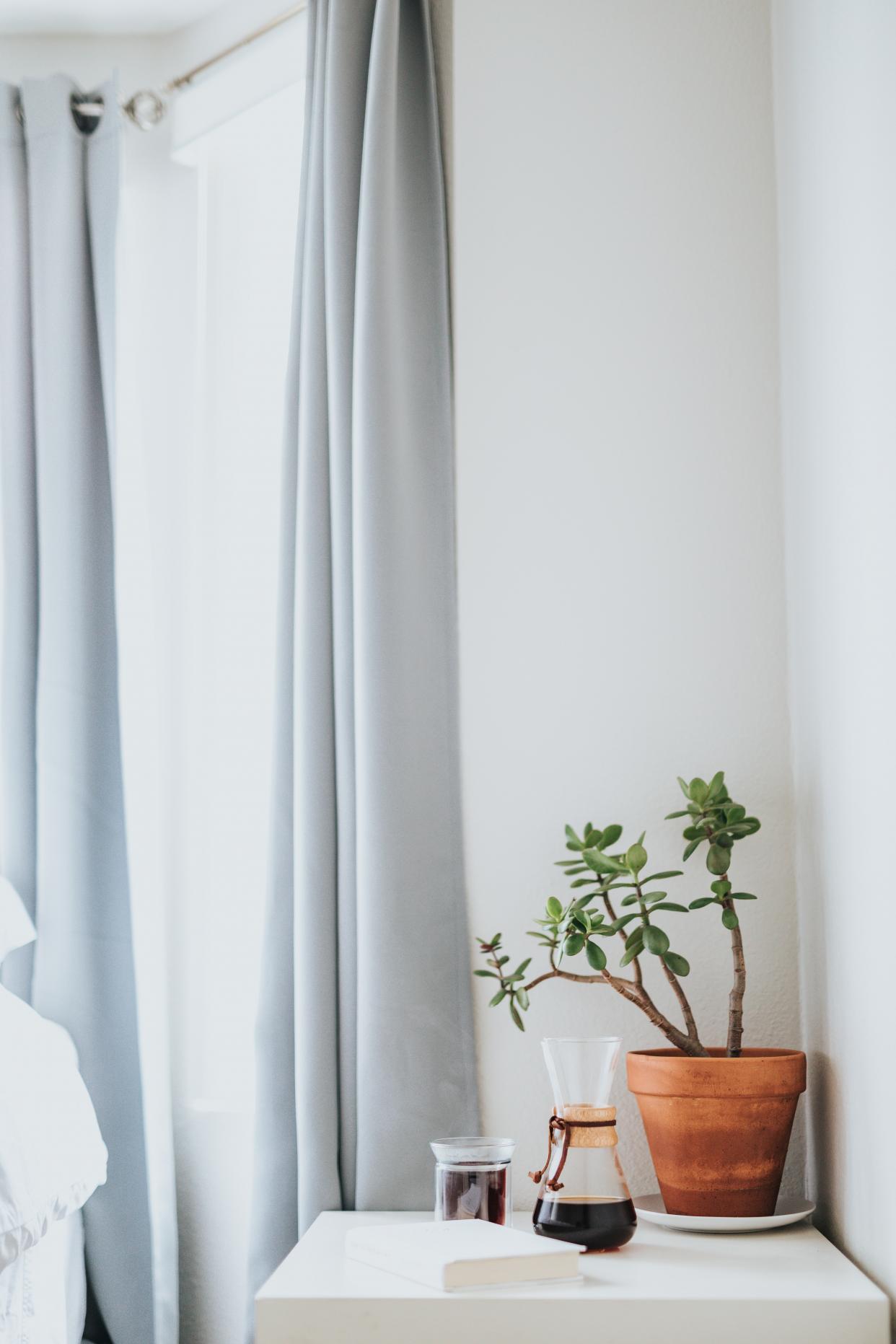
The jade plant is well known for its bonsai capabilities, since it forms a bonsai very easily when pruning is done correctly. Many who learn bonsai begin with a jade plant, since they are durable, easy to put through the bonsai process, and attractive.
The jade plant is an evergreen with thick branches. It has thick, shiny, smooth leaves that grow in opposing pairs along the branches. Leaves are a rich jade green, although some may appear to be more of a yellow-green. Some varieties may develop a red tinge on the edges of leaves when exposed to high levels of sunlight. New stem growth is the same colour and texture as the leaves, becoming woody and brown with age.
It grows as an upright, rounded, thick-stemmed, strongly branched, evergreen shrub and reaches stature heights of up to 2.5 meters. The base is usually sparsely branched. Sometimes a single main trunk of up to 6 centimetres in diameter is formed. The succulent shoots are gray-green. The bark of older branches peels off in horizontal, brownish stripes.
The oppositely arranged, ascending to spreading, green leaves are stalked with up to 5 millimetres short. The fleshy, bare, obovate, wedge-shaped leaf blade is 3 to 9 centimetres long and 1.8 to 4 centimetres wide. The sharp-edged leaf margins are often reddish.
Numerous varieties and cultivars have been selected, of which C. ovata 'Hummel's Sunset' has gained the Royal Horticultural Society's Award of Garden Merit.

Although becoming brown and appearing woody with age, stems never become true lignified tissue, remaining succulent and fleshy throughout the plant's life. Under the right conditions, they may produce small white or pink, star-like shaped flowers in winter. The terminal inflorescence is a top round thyrsus with numerous dichasia. It has a length and a diameter of about 5 centimetres. The inflorescence stem has a length of 15 to 18 millimetres and a diameter of 2 millimetres. The flower stalks are 5 millimetres long.
The sweet-scented, hermaphrodite flowers are radial symmetry and double perianth. The five about 2 millimetres long sepals are fused to one another at their base. The pink or white flower crown is star-shaped and has a diameter of about 15 millimetres. Its lanceolate petals are 7 millimetres long and 2.5 millimetres wide. The stamens have a length of 5 millimetres. The combination of shorter days, cold nights and lack of water for several weeks will produce flowering around the beginning of winter.
As a succulent, Crassula ovata requires little water in the summer, and even less in the winter. It is susceptible to overwatering, especially during the cold season. Watering excessively can cause leaf fall and root rot. However, also the lack of water can damage it. It should be grown in a porous substrate with good drainage, which will vary depending on the climate it is grown in. It requires about 4-6 hours of direct sun, or medium shade exposures with bright light. In regions of mild weather it can withstand some light frost, provided that the substrate is kept dry.
C. ovata may display a red tinge around its leaves when grown with bright sunlight. In more extreme cases, the green colour of the plant is lost and can be replaced by yellow. This is caused by the jade plant making pigments such as carotenoids to protect from harsh sunlight and ultraviolet rays. The jade plant also does best in rich, well-draining soil. The plant also flowers in the wintertime, particularly during a cooler, darker, dry spell. C. ovata is sometimes attacked by mealybugs, a common nuisance of the succulents.

The jade plant is well known for its bonsai capabilities, since it forms a bonsai very easily when pruning is done correctly. Many who learn bonsai begin with a jade plant, since they are durable, easy to put through the bonsai process, and attractive.
0
0



